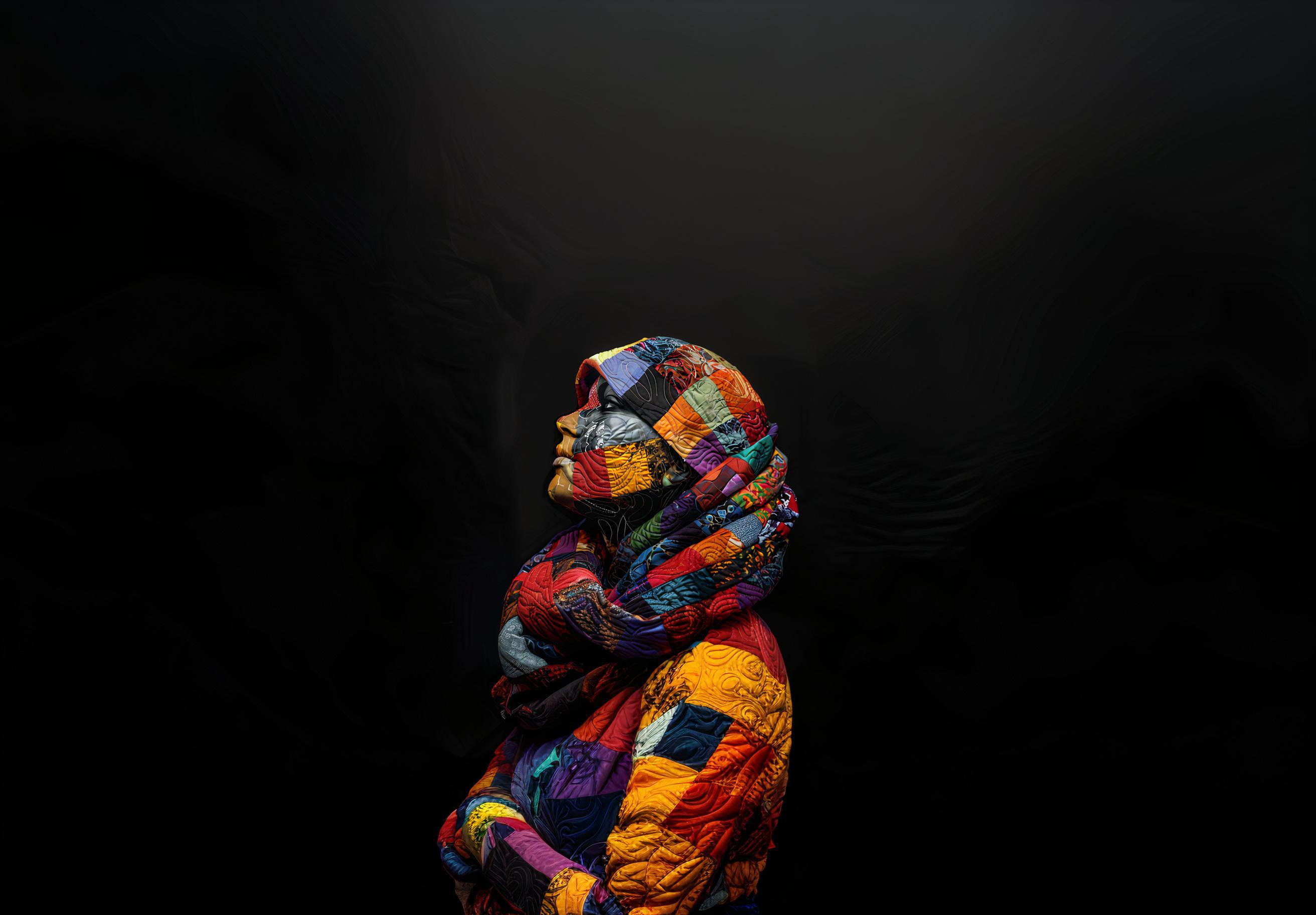
Issue No. 16 | April 2024
curated.


This Issue 3 - Featured Designer Monika Forsberg, The Conservatory Craft 4 - Fabric Collecton Bloomology 6 - Artcle The History of Men & Masculinity in the World of Quilting 10 - Fabric Collection Shoreline 14 - Artcle SewEndipitous® Wins 2024 Grand & Regional Prizes 15 - Sewing Furniture Deals Kangaroo & Arrow Sewing Furniture 16 - Artcle The Art of Perseverance: Quilting and Sewing with Chronic Illnesses 20 - Deals Sewing Machine & Accessories Sales 22 - Fabric Collecton Chickadee Landing 26 - ArtcleQuilting Outside My Comfort Zone: Transitioning from a Traditional to Modern Quilting Style 31 - Coming Soon Upcoming Fabric Collections to Watch Out For 32 - Fabric Collection Chelsea Garden 36 - Fabric Collection American Spirit 38 - Quilter Greetng Cards Canines & Quilts 40 - SewEndiptous® Designs Free Online Digital Jigsaw Puzzles
Featured Designer

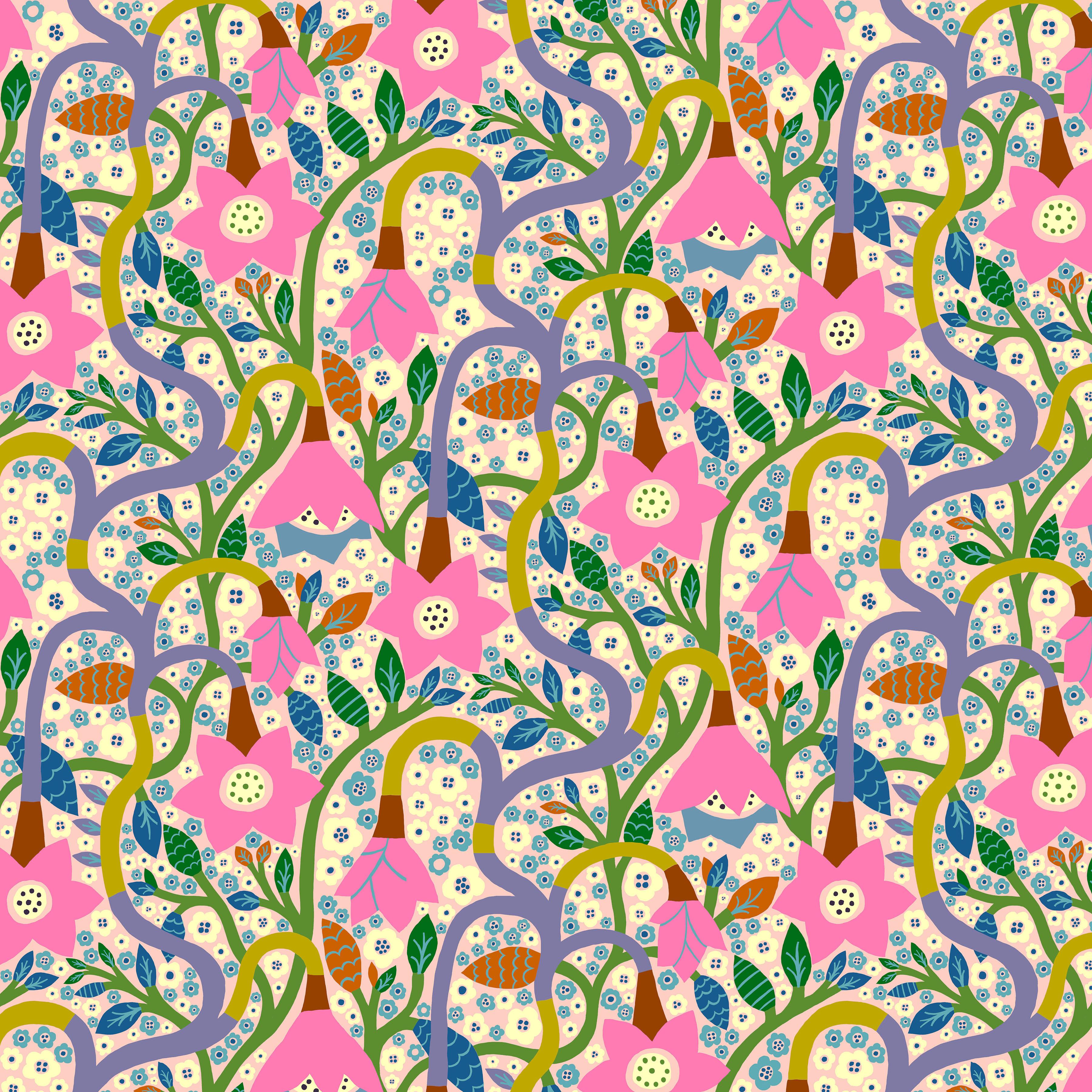
Monika is a Swedish born freelance illustrator and occasional animator based in North London. She studied art & filmmaking at the RCA. Her work is a quirky explosion of colour and humour A technicolor world Using pen, paper and paint her work is a fusion of everyday observation and fantasy. Recent clients include eeBoo, NY Review, Oopsie daisy, Channel 4, UN, UNICEF, Anthropologie, Gorman Clothing, REDvalentino, URAX, Natur &Kultur, Quarto Publishing and Lagom Design
FB: @monika forsberg | IG: @monika forsberg | Pinterest: walkyland | #conservatorycraft | Website: https://www walkyland com
View Monika’s new fabric collection: BLOOMOLOGY
Monika Forsberg Conservatory Craft
Bloomology
Hampstead Heath and the streets surrounding it have green leaves and flowers in abundance, spilling into the streets. They relentlessly grow towards the London sky with bricks and mortar as a backdrop. I walk the streets of the wild heath every day through rain and sunshine, snow and hail, and quietly observe the growing, budding, sprawling, and wilting blooms.
Hampstead Heath is a wild park of woodland and meadows, tucked inside north London’s Zone Two - less than four miles from the centre, though you’d never know it. It sprawls over 800 acres and boasts some of the most spectacular views in the city. This is the park that inspired C.S. Lewis to write The Chronicles of Narnia, that Constable spent his final years painting, and Londoners of all stripes have been coming here to escape the city for over 200 years.

Manufacturer: FreeSpirit Fabrics
Description: 100% Cotton
Type: 44"- 45" Wide
Designer: Monika Forsberg with Conservatory Craft
Group Name: Bloomology
Theme: Florals


BLOOMOLOGY Spangled - Blue PWMF034.BLUE

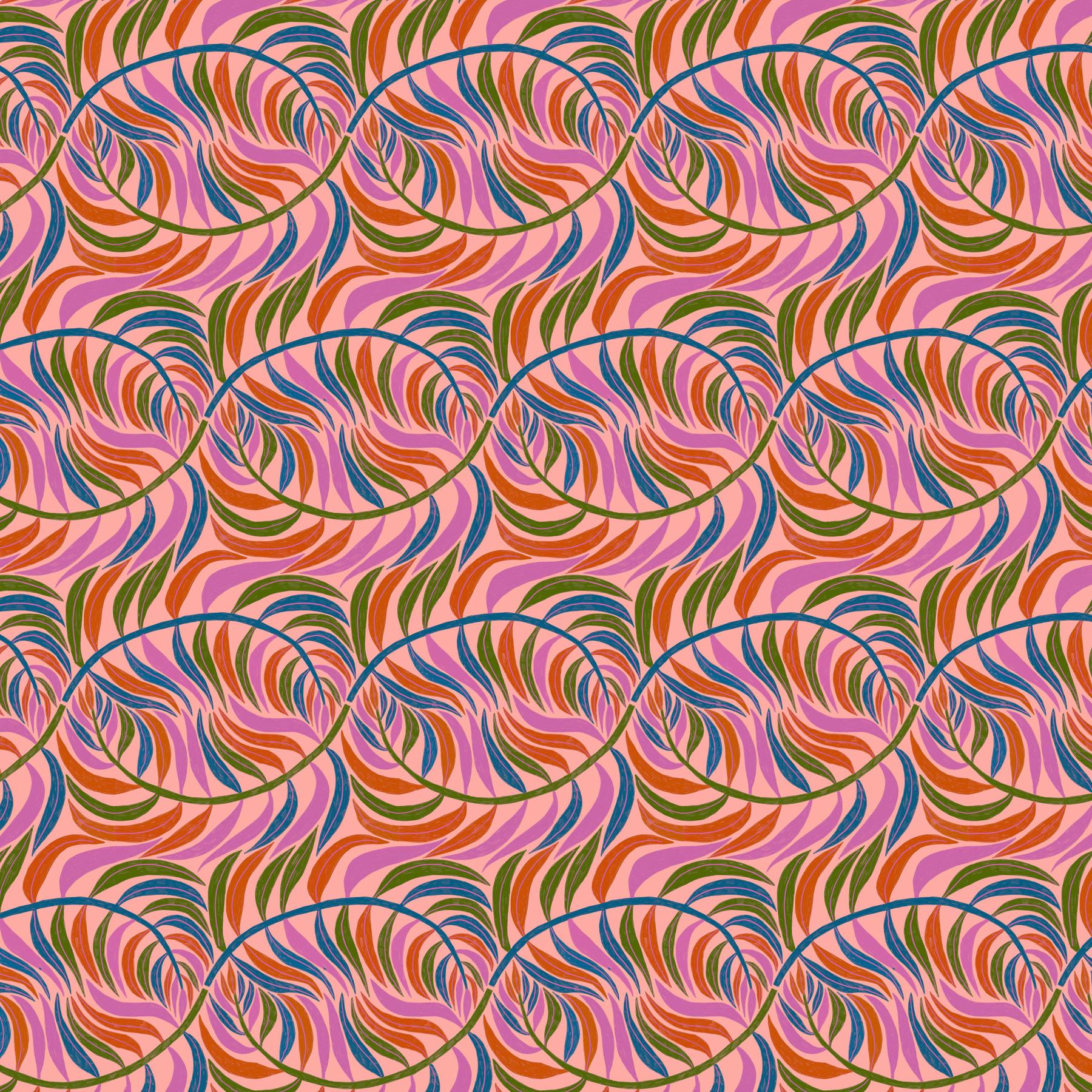
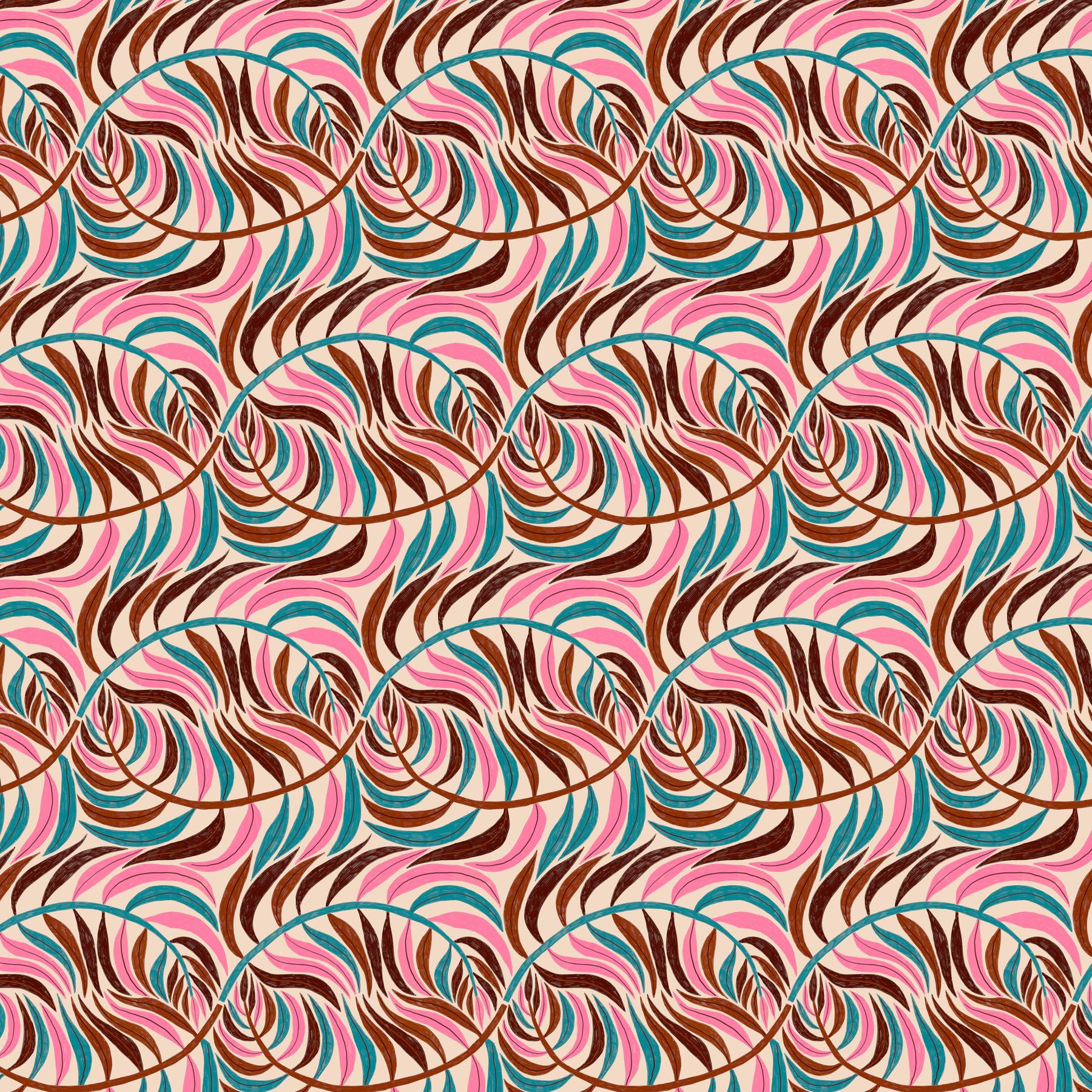
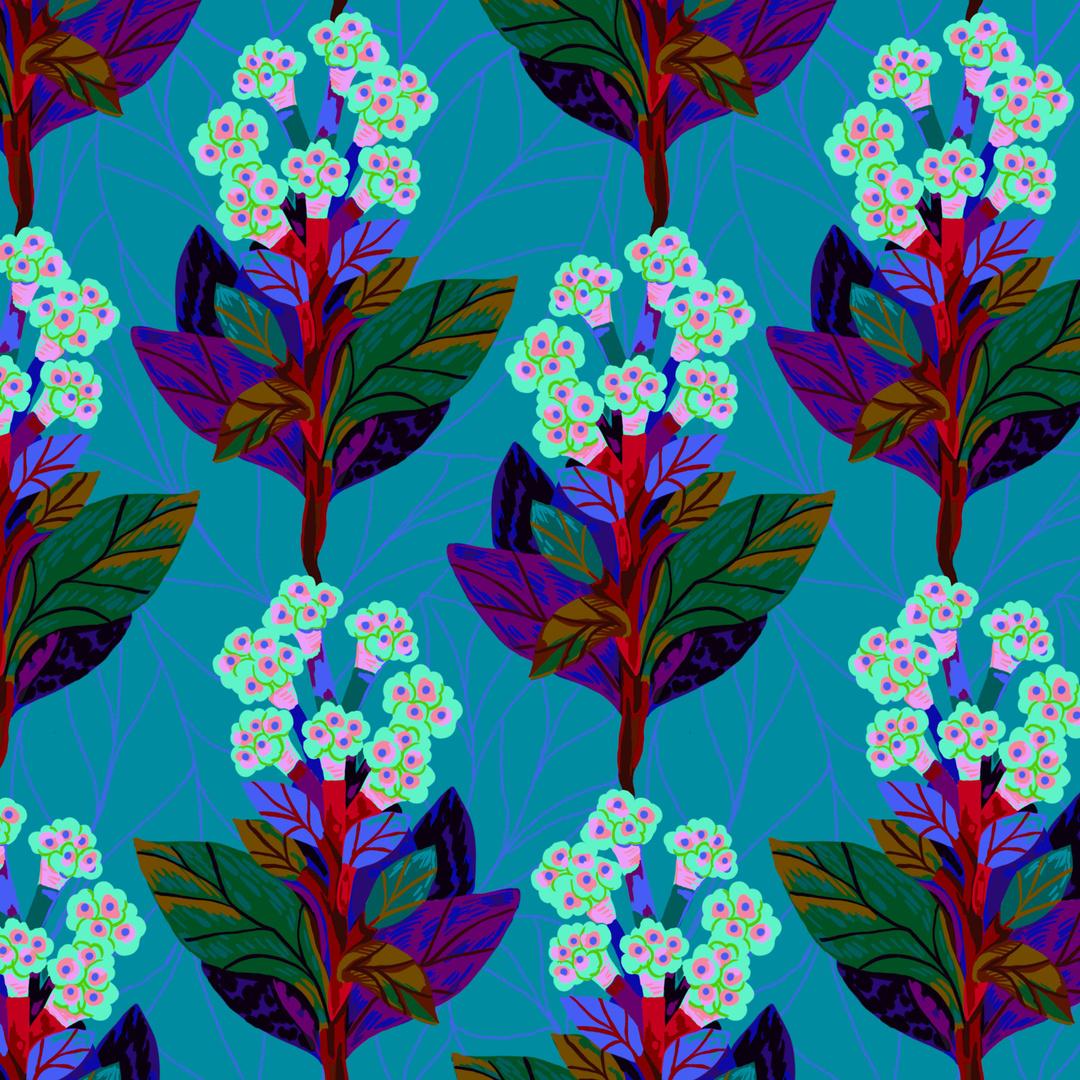
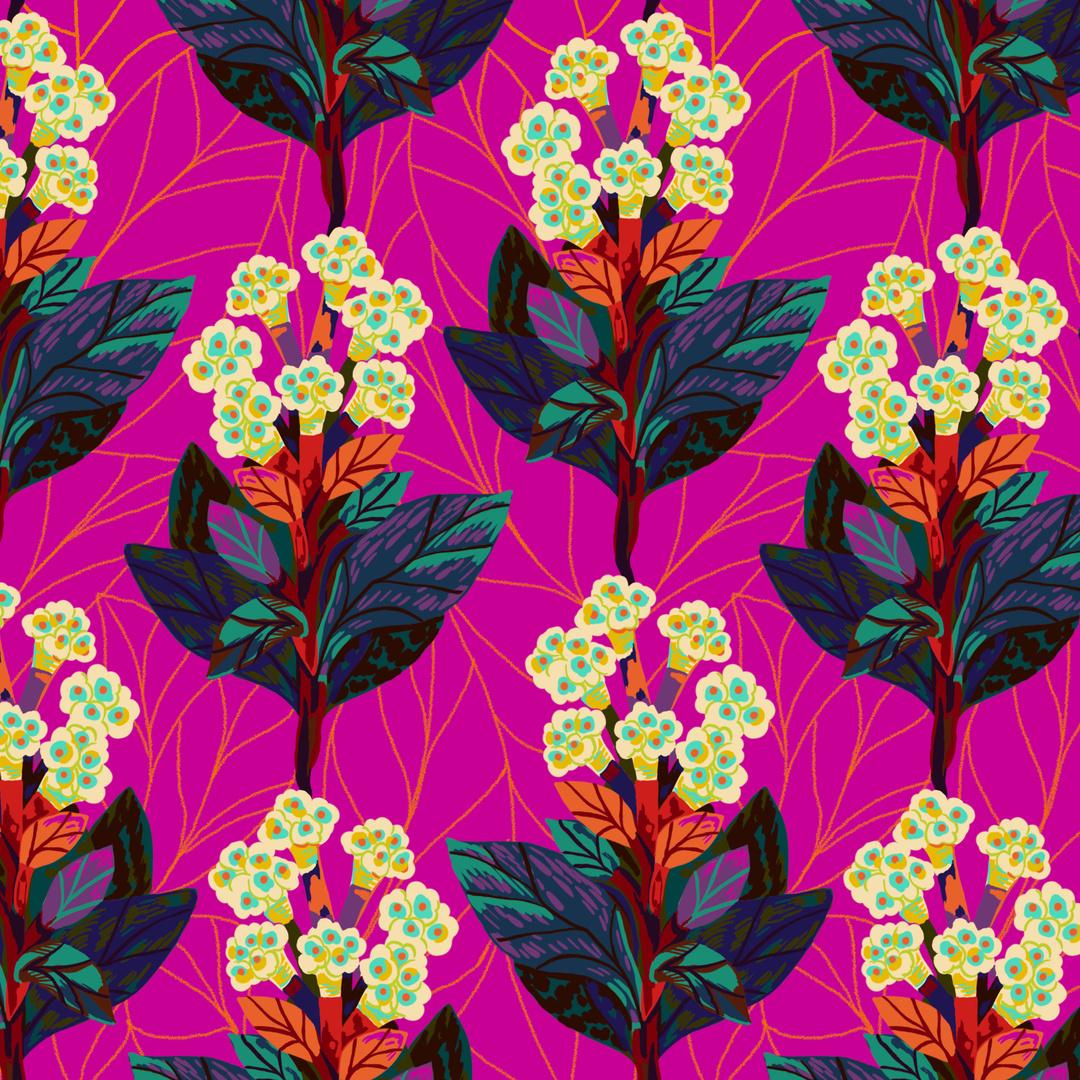




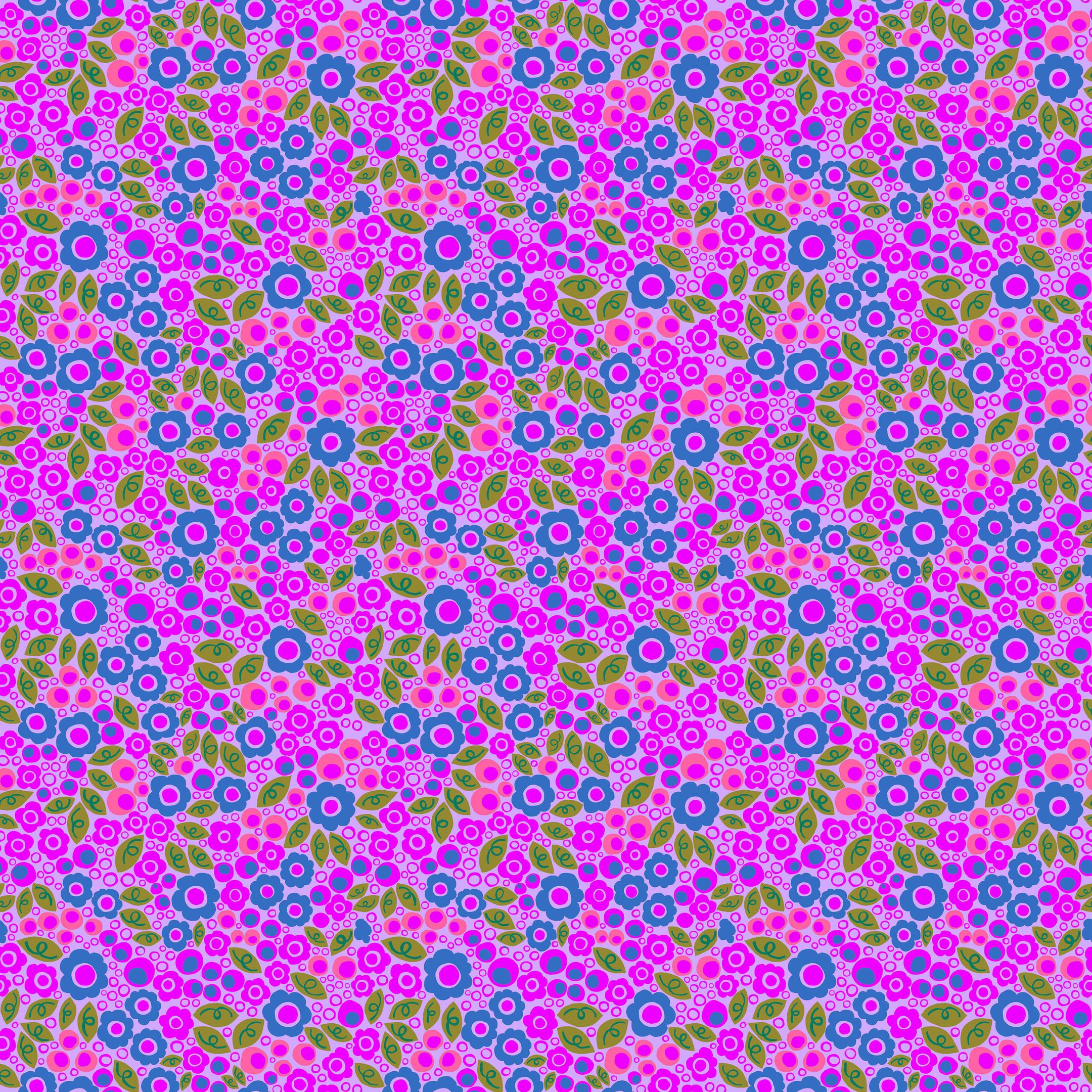

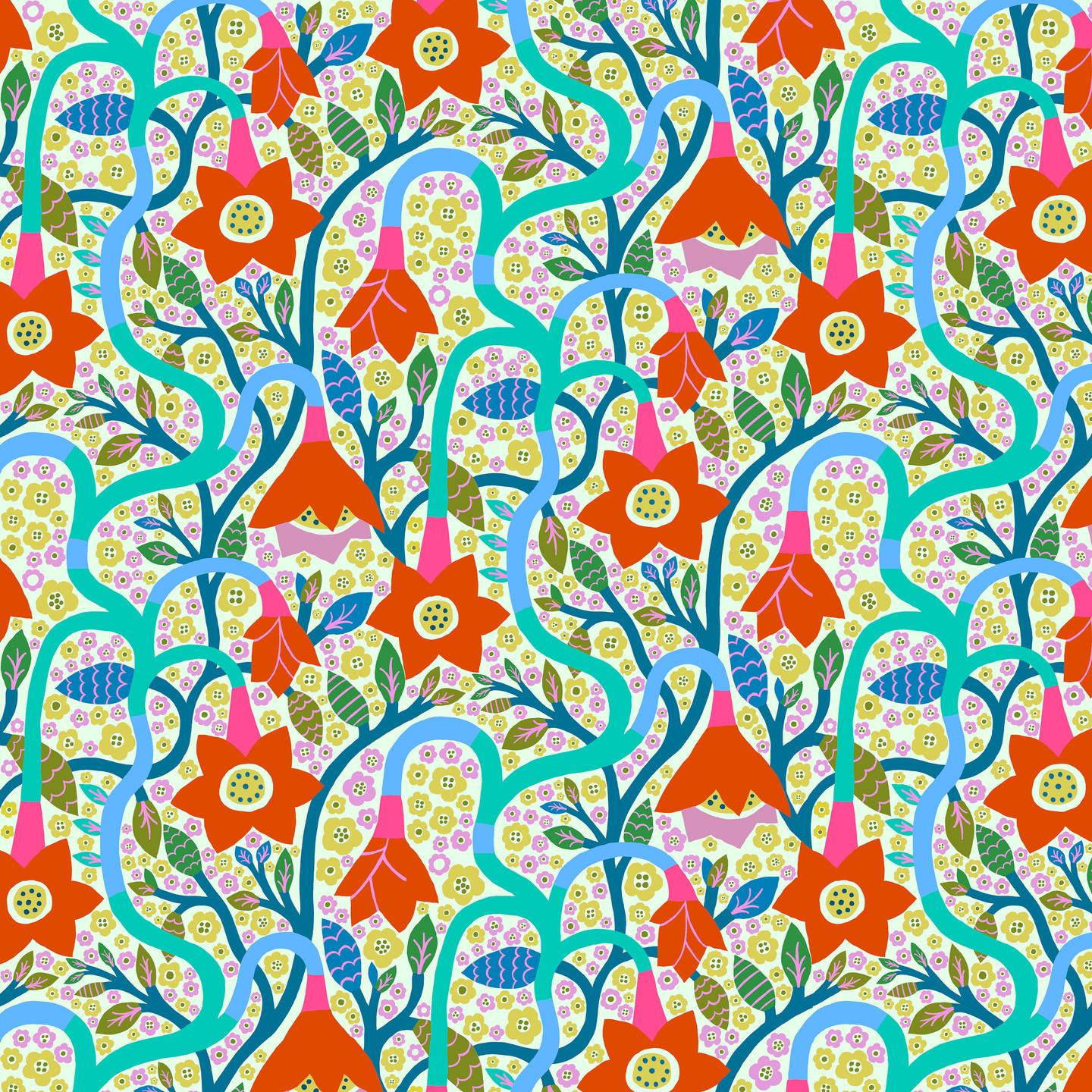
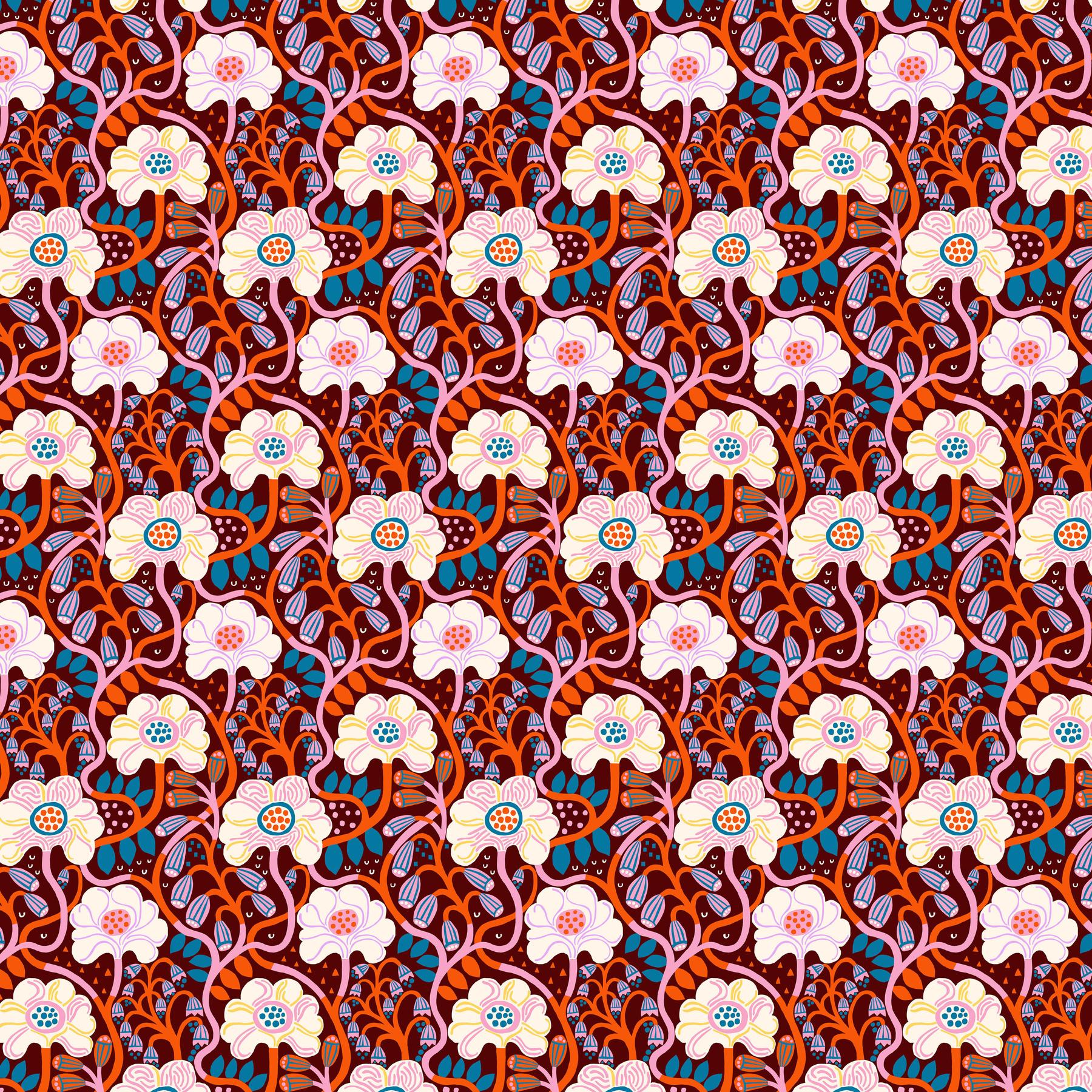
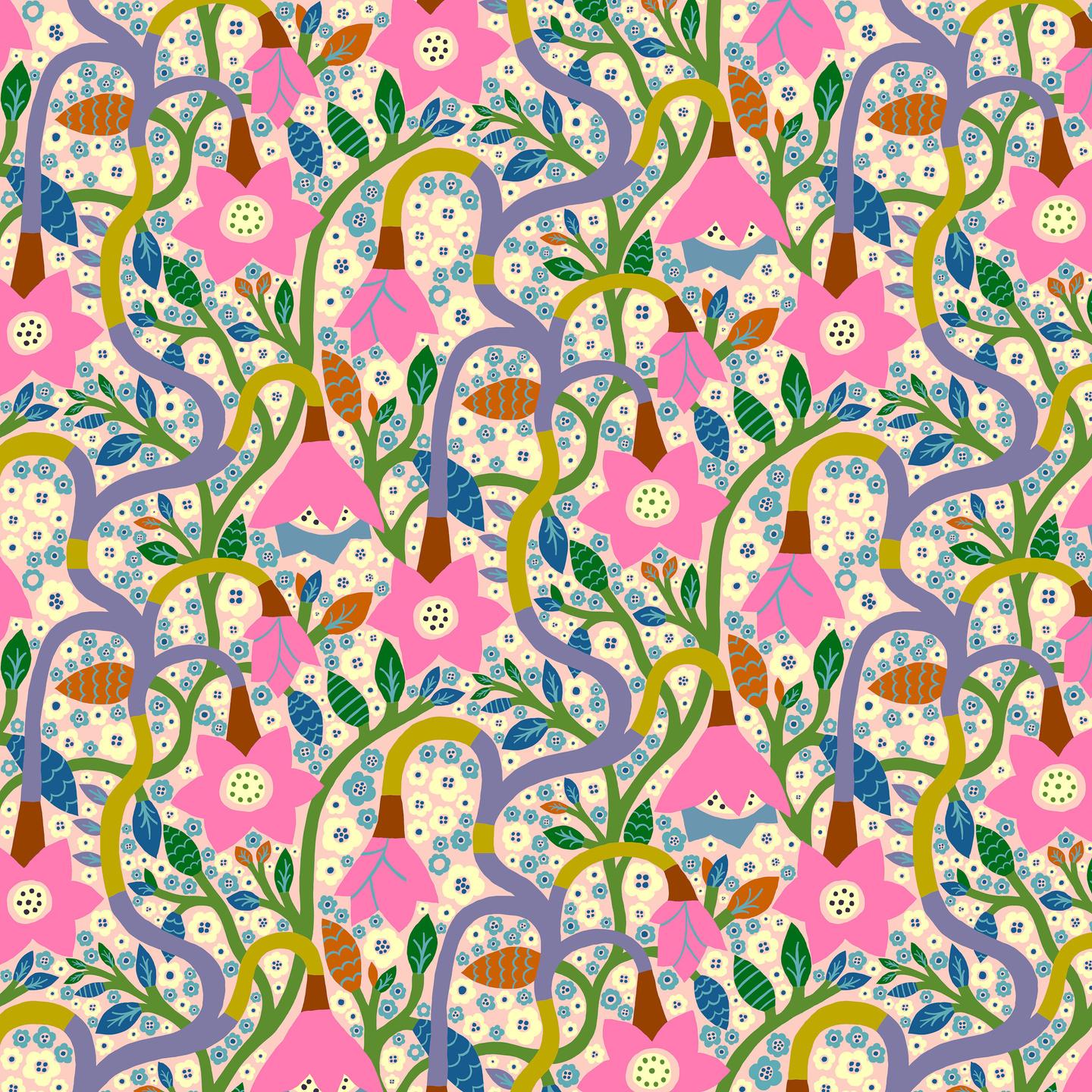
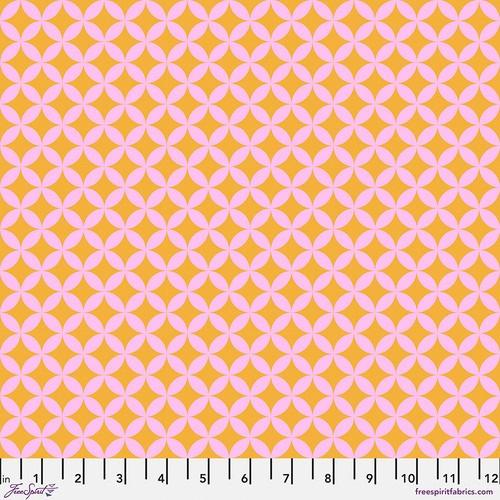

 PWMF033 .GUAVA
PWMF036 GRASS
PWMF038 JADE
Love Always, AM PWAH158.SKY
PWMF033 .NEAPOLITAN
PWMF036 PLUM
PWMF038 MAGENTA
Love Always, AM PWAH202.GOLDEN
PWMF037 .MAIZE
PWMF035 NAVY
PWMF032 PRIMARY
Love Always, AM PWAH132.MANGO
PWMF037 .MAPLE
PWMF035 TANGERINE
PWMF032 SECONDARY
PWMF033 .GUAVA
PWMF036 GRASS
PWMF038 JADE
Love Always, AM PWAH158.SKY
PWMF033 .NEAPOLITAN
PWMF036 PLUM
PWMF038 MAGENTA
Love Always, AM PWAH202.GOLDEN
PWMF037 .MAIZE
PWMF035 NAVY
PWMF032 PRIMARY
Love Always, AM PWAH132.MANGO
PWMF037 .MAPLE
PWMF035 TANGERINE
PWMF032 SECONDARY
PWAH132.SWEET BLOOMOLOGY 5
Love Always, AM
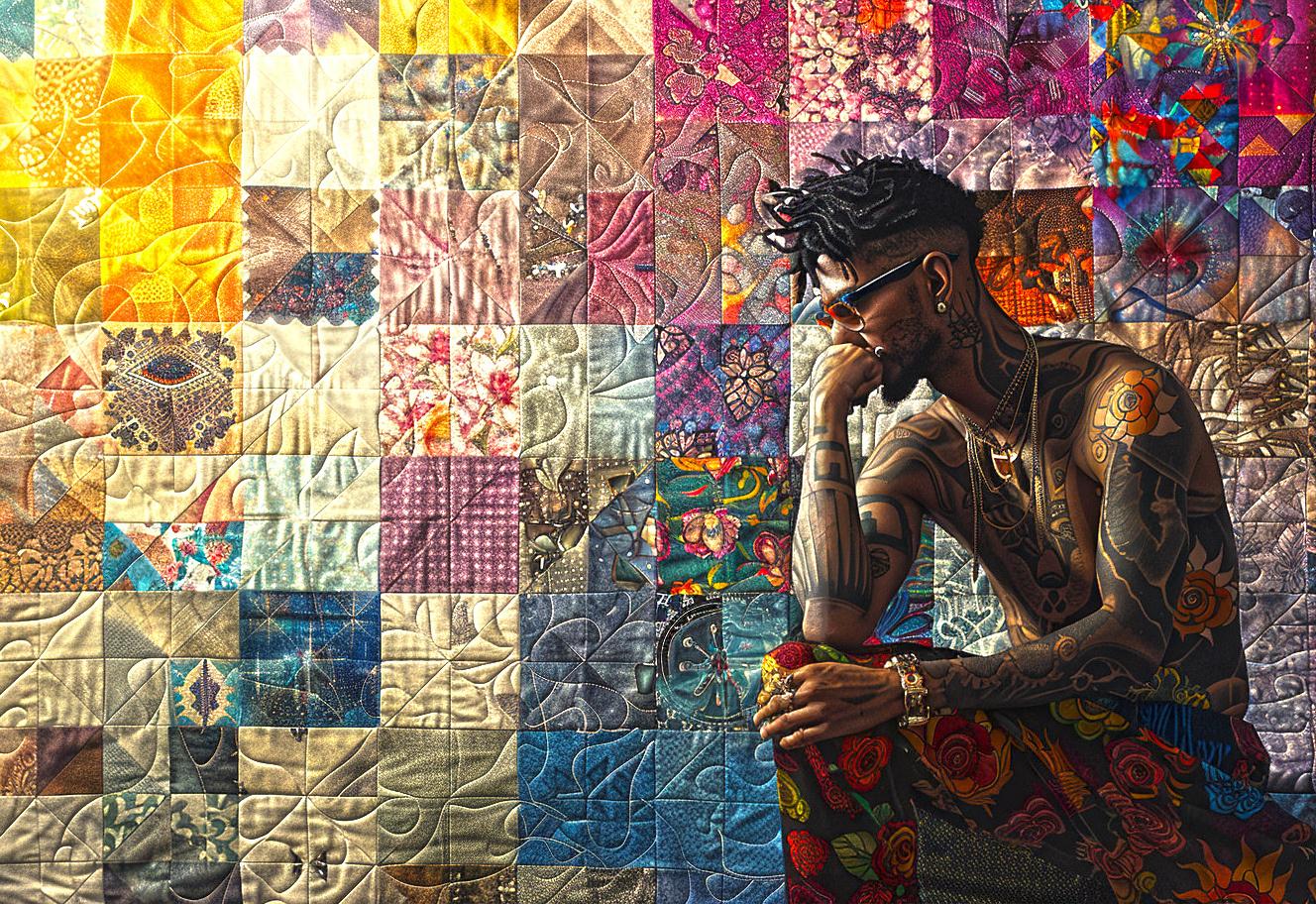
THE HISTORY OF MEN AND MASCULINITY IN THE WORLD OF QUILTING
by: Steve Baker, SewEndipitous
Quilting, a craft that dates back several centuries, has been a significant part of many cultures worldwide Traditionally, quilting has been a communal activity, often associated with women gathering in groups to work on a quilt These quilting bees were not just about creating a functional item but also served as a social event where stories were shared and bonds were formed Quilting has also been a form of artistic expression, with intricate designs and patterns telling stories or symbolizing important life events.
6 ARTICLE
While quilting has often been seen as a female-dominated craft, men have also played a significant role in its history. From the sailors of the 19th Century who made woolen quilts during their long voyages to the soldiers from the American Civil War who quilted to pass the time and provide protection from the elements in between battles, men have been involved in quilting in various capacities. In many cultures, men were the ones who created the tools used for quilting, and in some cases, they were the quiltmakers themselves
The concept of masculinity in the world of quilting is fascinating It challenges traditional gender norms and offers a fresh perspective on what it means to be masculine Men who quilt often face a dichotomy the craft is seen as 'feminine,' yet the act of creating, of working with one's hands, is traditionally 'masculine ' This intersection of masculinity and a historically female craft creates a unique space for exploring gender roles and stereotypes
We will delve deeper into the history of men and masculinity in quilting, exploring men's roles, their challenges, and how they have contributed to this rich and diverse craft.
EARLY HISTORY OF QUILTING
Quilting, as a craft, has a rich and varied history that dates back to ancient times. The earliest known quilted garment is depicted on a carved ivory figure of a Pharaoh of the Egyptian First Dynasty around 3400 B.C. In Asia, particularly in China and Mongolia, quilting was used to create armor, while in the Middle East, quilted carpets were a staple of nomadic tribes. Again, what constitutes a "quilt" has also evolved over time.
The role of men in the early history of quilting is fascinating and complex In many early civilizations, quilting was not just a domestic craft but also a vital part of military and trade activities Men were often the ones who quilted armor for soldiers and created quilted goods for trade In the Middle Ages, for instance, men were members of professional quilting guilds These guilds were responsible for producing high-quality quilted items, including tapestries and armor
In many indigenous cultures, quilting was a communal activity that both men and women participated in For
example, in Native American tribes, men often took part in the quilting process, using it to tell stories and preserve their cultural heritage
QUILTING IN THE MIDDLE AGES AND RENAISSANCE
During the Middle Ages and the Renaissance, quilting underwent significant changes The craft evolved from a practical necessity into an art form, with intricate designs and patterns becoming increasingly popular The quilting techniques also saw a transformation
The basic running stitch used in earlier times was replaced by more complex stitches, such as the backstitch and the whipstitch. The use of appliqué, a technique where pieces of fabric are sewn onto a larger piece to create a design, also became prevalent during this period.
Men played a crucial role in the evolution of quilting during the Middle Ages and the Renaissance. They were not only involved in the creation of quilts but also in their trade Many men were members of quilting guilds, organizations that regulated the craft and trade of quilting These guilds set standards for quality and ensured that their members adhered to them They also provided a platform for members to share ideas and techniques
In addition to being members of guilds, many men were professional quilters They were commissioned to create quilts for wealthy patrons, churches, and other institutions These quilts were often large and elaborate, showcasing the skill and creativity of the quilter Some of these quilts have survived to this day and are considered valuable pieces of art and history
QUILTING IN THE INDUSTRIAL REVOLUTION
The Industrial Revolution, spanning from the late 18th to early 19th Century, brought about significant changes in the quilting world The advent of mechanized textile production transformed the craft in profound ways Before industrialization, quilting was a labor-intensive process, with each piece of fabric being cut and stitched by hand. However, introducing sewing machines and factoryproduced textiles greatly expedited the process. This allowed for the production of quilts on a much larger scale, making them more accessible to the general public.
7 THE HISTORY OF MEN AND MASCULINITY IN THE WORLD OF QUILTING
making them more accessible to the general public
The Industrial Revolution also brought about a shift in gender roles within the quilting community Before this period, quilting was largely seen as a domestic task performed by women However, the advent of industrialization saw an increase in the involvement of men in the craft Men began to take on roles in the production and sale of quilts, often working in factories or owning businesses that produced and sold quilts This period also saw the emergence of male professional quilters, who would create intricate designs for wealthy clients.
Despite these changes, the perception of quilting as a feminine craft persisted. This was partly due to societal norms of the time, which often relegated women to domestic tasks. However, the involvement of men in quilting during the Industrial Revolution laid the groundwork for the increased participation of men in the craft in the years to come
QUILTING IN THE 20TH CENTURY
The 20th Century marked a significant turning point in the history of quilting The craft, which had been largely industrialized during the previous Century, began to regain its status as a form of personal expression and creativity
This resurgence was largely due to the influence of the Arts and Crafts movement, which emphasized the value of handmade goods and traditional craftsmanship With its rich history and potential for artistic expression, quilting fits perfectly into this ethos
Quilting bees, once a common social event in the 19th Century, began to reappear, often with a modern twist These gatherings provided a space for individuals to share techniques, patterns, and stories, fostering a sense of community around the craft. Quilting also began to be recognized as an art form in its own right, with quilt shows and exhibitions becoming more common.
THE RE-EMERGENCE OF MEN IN THE QUILTING WORLD
The 20th Century also saw a re-emergence of men in the world of quilting While men had been involved in quilting in the past, particularly as professional quilters in the Middle Ages and Renaissance, their role had diminished with the industrialization of the craft. However, the 20th
Century brought a shift in societal attitudes towards gender roles and masculinity, and men began to reclaim their place in the quilting world
Men started to participate in quilting bees, join quilting guilds, and even make a living as professional quilters. They brought with them a fresh perspective, often incorporating unconventional materials and techniques into their work. This period also saw the rise of several influential male quilters, whose work challenged traditional notions of quilting and masculinity.
In the 21st Century, quilting has seen a significant shift towards becoming a gender-neutral craft This change has been driven by a broader societal shift towards equality and the breaking down of traditional gender roles Once seen as a predominantly female activity, the craft of quilting has been embraced by men who have found a creative outlet and a sense of community in the quilting world
Several male quilters have risen to prominence in recent years, challenging the stereotype that quilting is a femaleonly craft Figures such as Rob Appell, Ricky Tims, Tim Holtz, and Luke Haynes have become influential in the quilting world for their innovative designs and techniques and their role in promoting quilting among men. Their work has been instrumental in challenging traditional notions of masculinity and opening up the craft to a wider audience.
The advent of social media and online communities has played a significant role in the rise of men in quilting. Platforms such as Instagram, Facebook, Pinterest, and various quilting forums have provided a space for male quilters to share their work, exchange ideas, and find support These online communities have helped to break down barriers and make quilting more accessible to men, encouraging more to take up the craft The visibility of male quilters on these platforms has also helped to challenge stereotypes and promote the idea that quilting is a craft for everyone, regardless of gender
THE FUTURE OF MEN IN QUILTING
As we look towards the future, the role of men in quilting is expected to continue evolving The rise of gender-neutral crafting and the increasing recognition of quilting as an art form rather than just a domestic task has opened up the field to a more diverse range of participants Men are
8
THE HISTORY OF MEN AND MASCULINITY IN THE WORLD OF QUILTING
THE HISTORY OF MEN AND MASCULINITY IN THE WORLD OF QUILTING
increasingly taking up quilting, both as a hobby and professionally
Moreover, the growing popularity of modern quilting styles, which often emphasize geometric patterns and bold colors, is attracting a younger and more diverse demographic to quilting This includes a significant number of men who are drawn to the creative possibilities of these contemporary designs
The changing gender norms in society are also likely to have a significant impact on the world of quilting As traditional gender roles continue to be challenged and redefined, more men may feel comfortable embracing quilting. This could lead to further diversification of quilting styles and techniques as men bring their own unique perspectives and ideas to the craft.
Furthermore, as the quilting community becomes more inclusive, we can expect to see a greater emphasis on collaboration and mutual learning. This could lead to exciting new developments in quilting, as quilters of all genders learn from each other and push the boundaries of what is possible in this ancient craft
The journey of men in the world of quilting has been a fascinating one, marked by periods of prominence, obscurity, and resurgence From the professional male quilters of the Middle Ages and Renaissance, through the gender shifts brought about by the Industrial Revolution, to the re-emergence of men in the quilting world in the 20th Century, the role of men in quilting has evolved significantly The modern era has seen quilting rise as a gender-neutral craft, with many prominent male quilters influencing the field and social media playing a crucial role in fostering online quilting communities.
Recognizing the role of men in quilting is not just about acknowledging their contributions to this craft but also about challenging and expanding our understanding of gender norms and roles As we look to the future, the potential impact of changing gender norms on quilting is significant.
Like many other areas of life, the world of quilting is likely to continue evolving in exciting and unpredictable ways. The continued involvement of men in quilting, both as hobbyists and professionals, is a testament to the universal appeal of this craft. It reminds us that quilting, like all forms of creative expression, transcends gender and is enriched by the diverse perspectives and experiences of all who engage in it

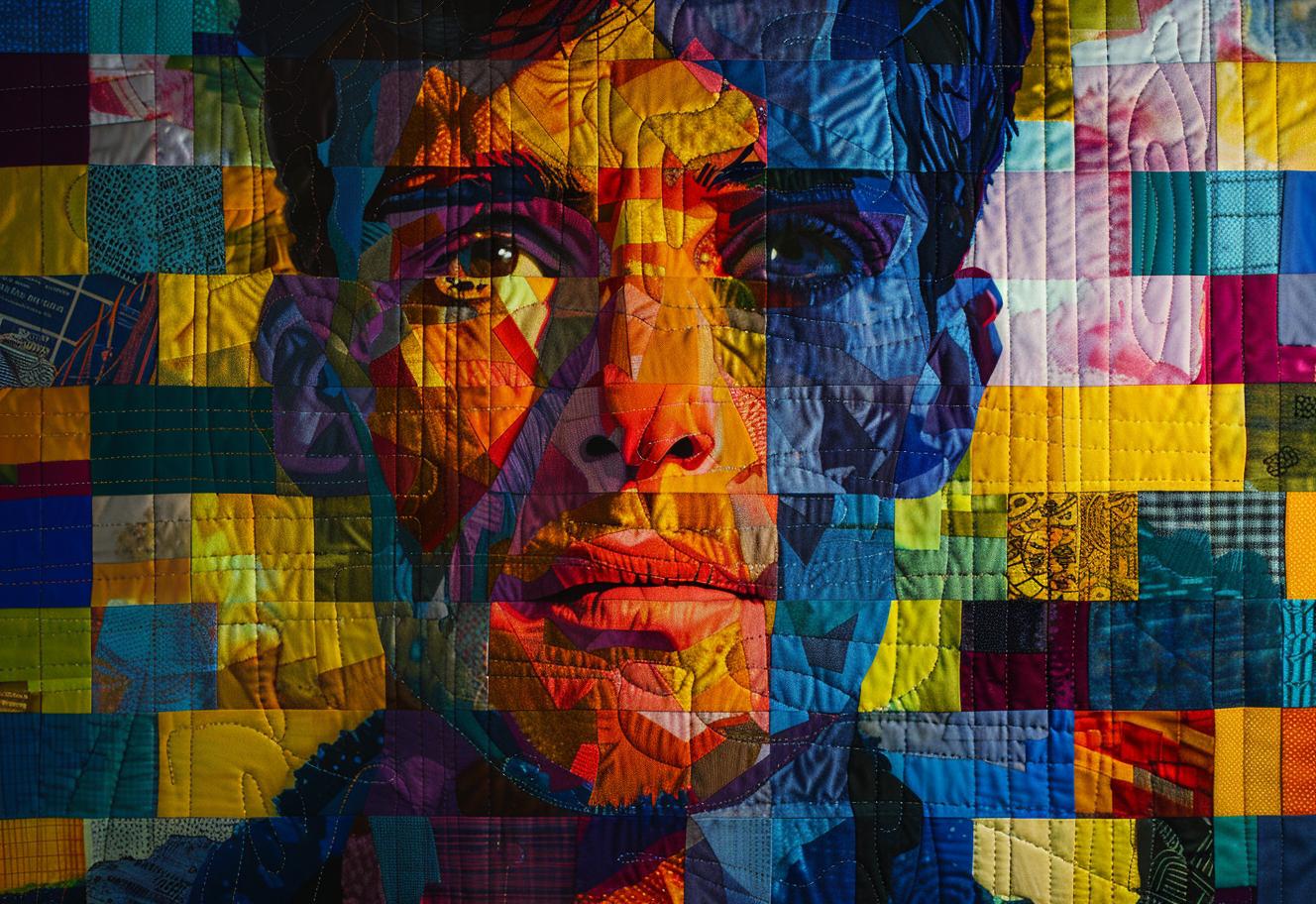
9
Shoreline
I never miss a chance to visit the ocean. Standing at the edge of the water with my toes in the sand, breathing in the salty air and listening to the waves break somehow makes me feel whole again. In this collection, all of my favorite coastal blues and greens and a soft sandy gray come together in vintage florals, plaids and stripes to create a reminder of those beautiful moments on the shoreline.Camille


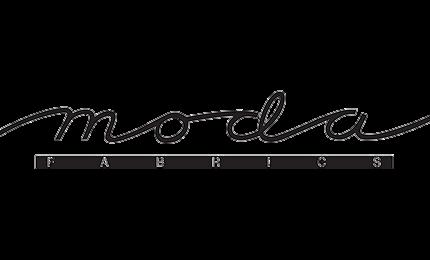
Manufacturer: Moda Fabrics
Description: 100% Cotton
Type: 44"- 45" Wide
Designer: Camille Roskelley
Group Name: Shoreline
Theme: Florals/Coastal
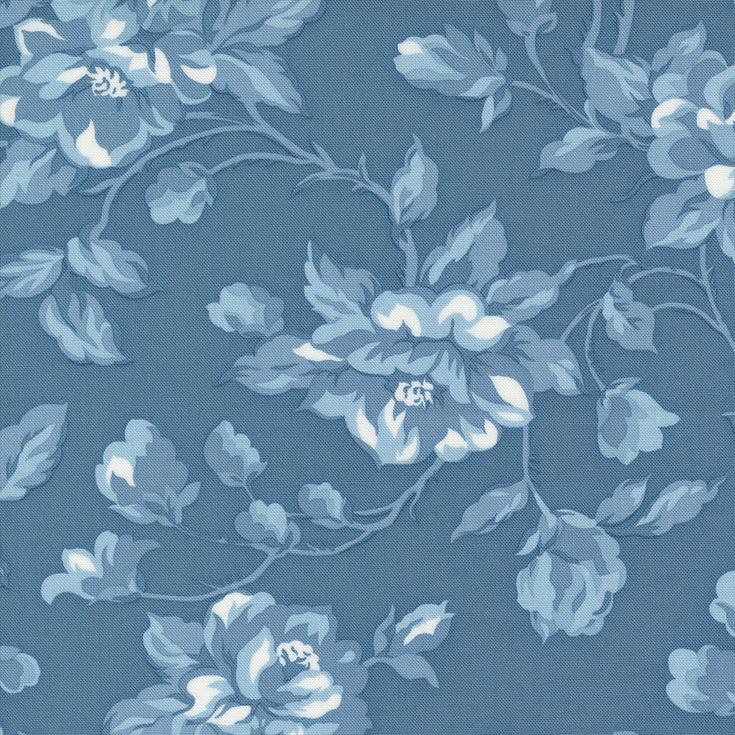
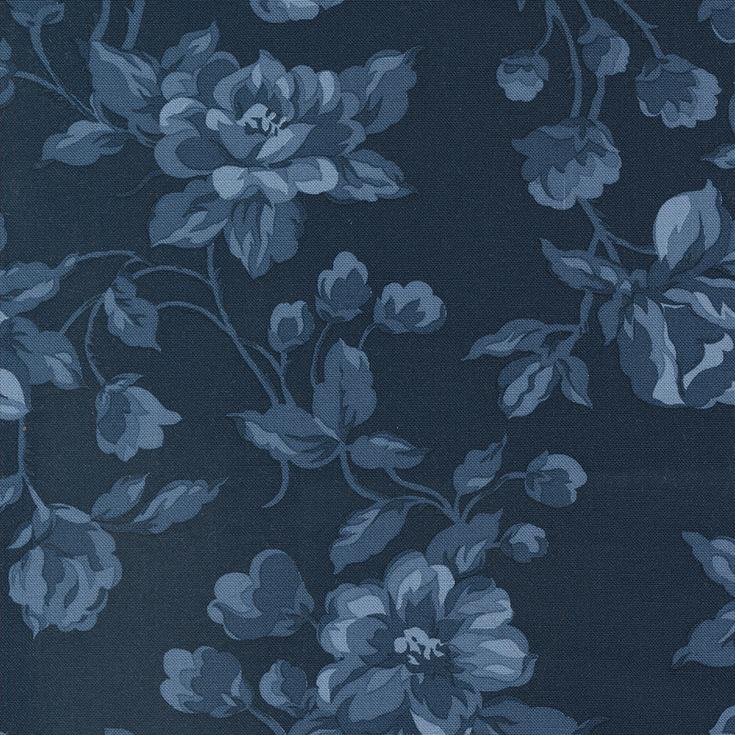

SHORELINE
Cream Multi 55300 11
Grey 55300 16
Medium Blue 55300 23
Navy 55300 24
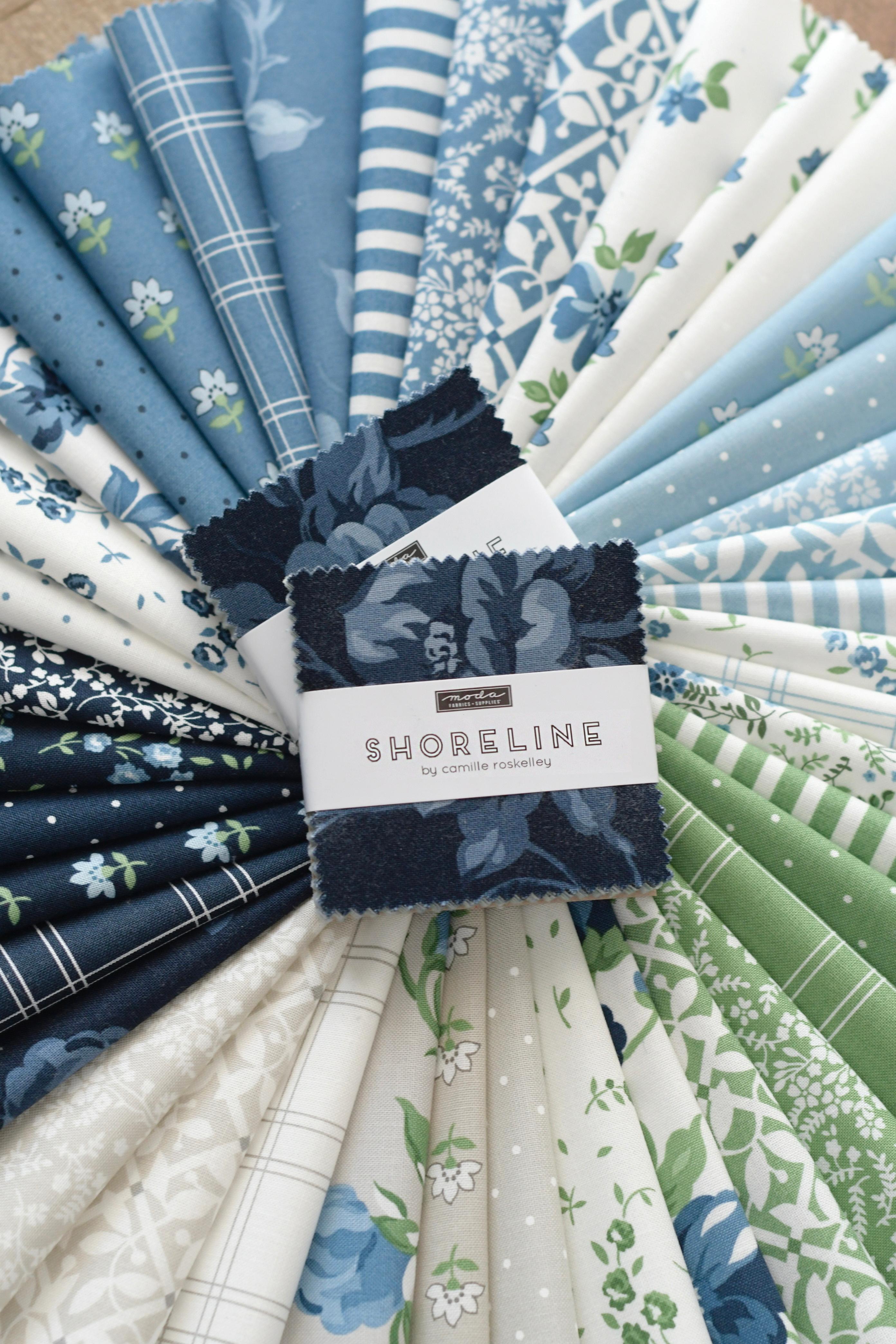

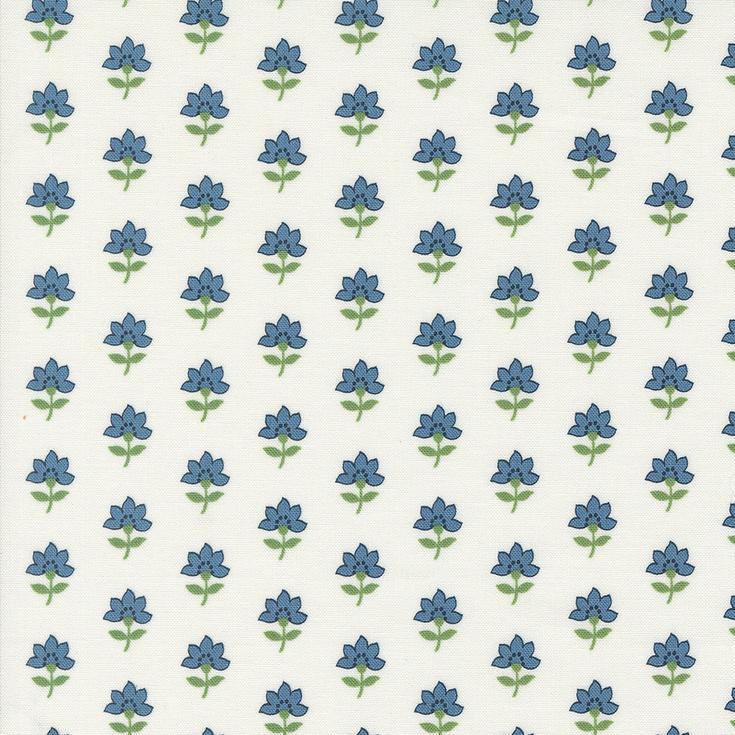
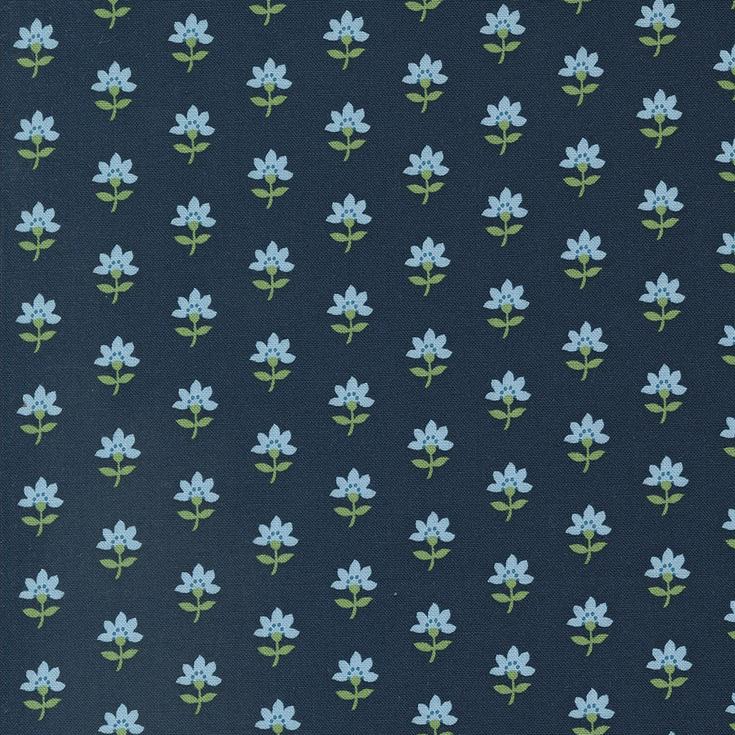

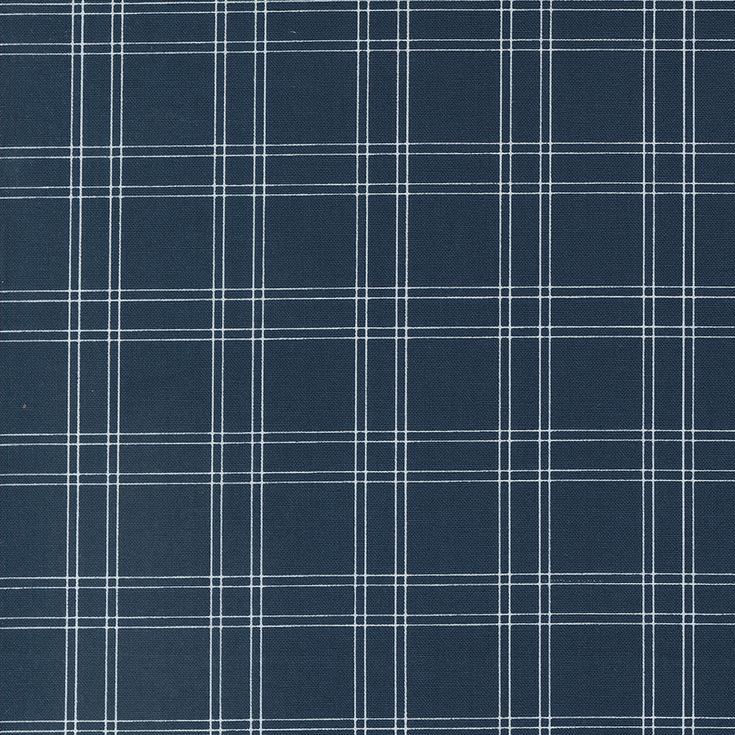

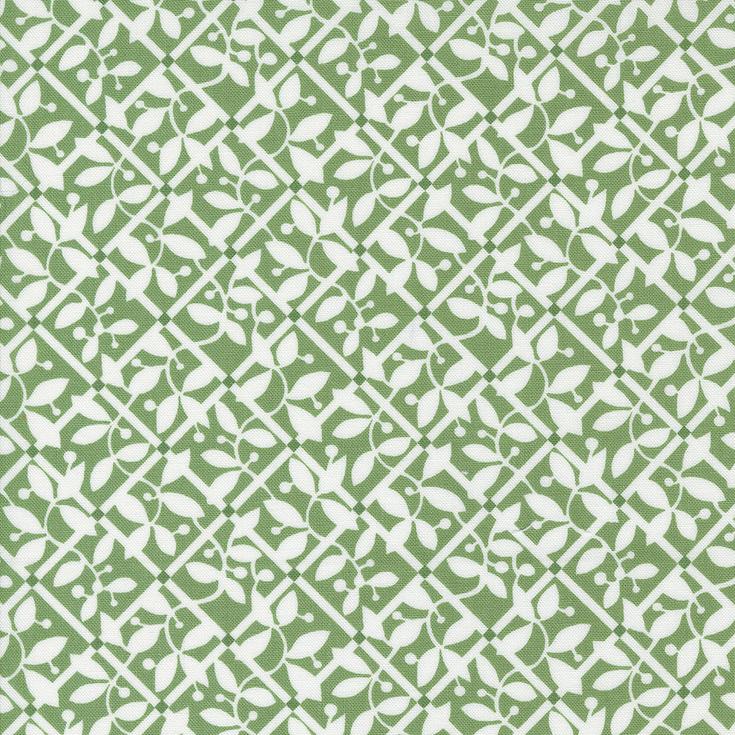

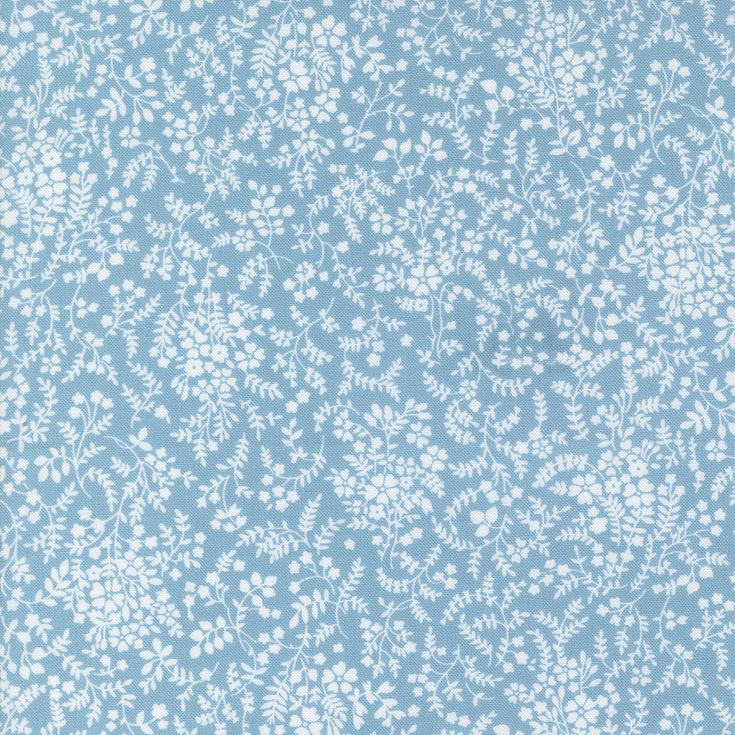
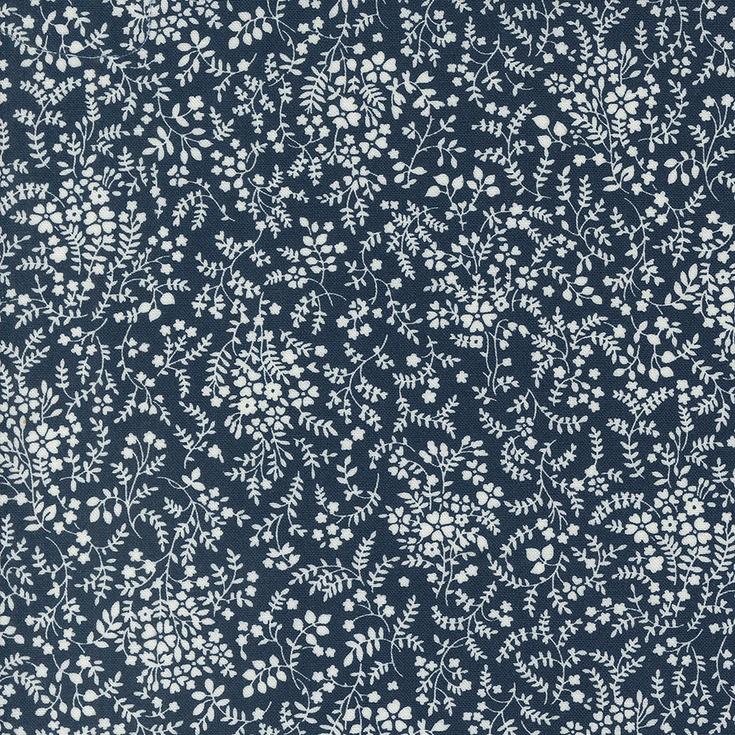
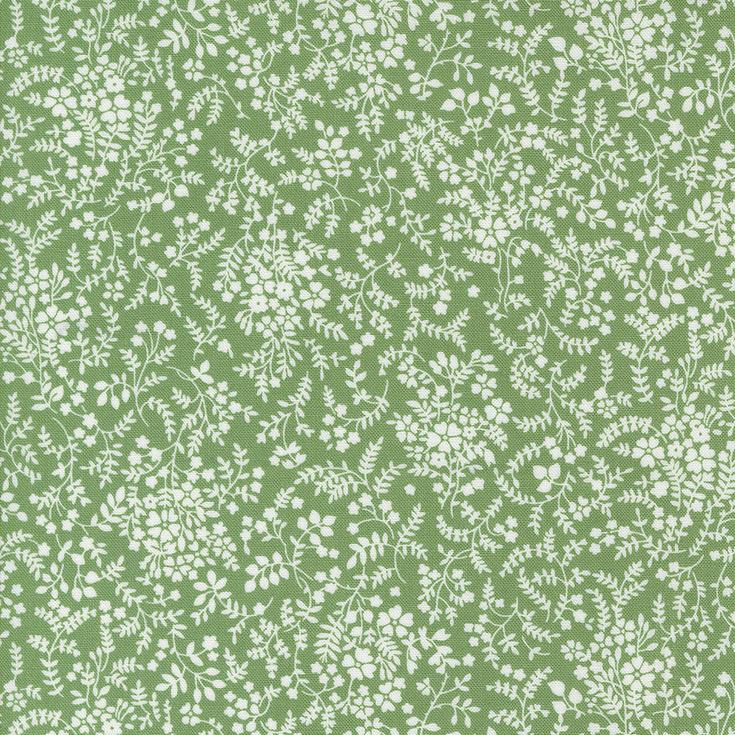


11
12
Cream Multi 55301
Light Blue 55303
24
14
15
25
16
11
26
14
22
11 SHORELINE 12
Navy 55304
Navy 55301
Green 55303
Green 55304
Grey 55301
Cream Multi 55304
Grey 55304
Navy 55302
Light Blue 55304
Cream Multi 55306

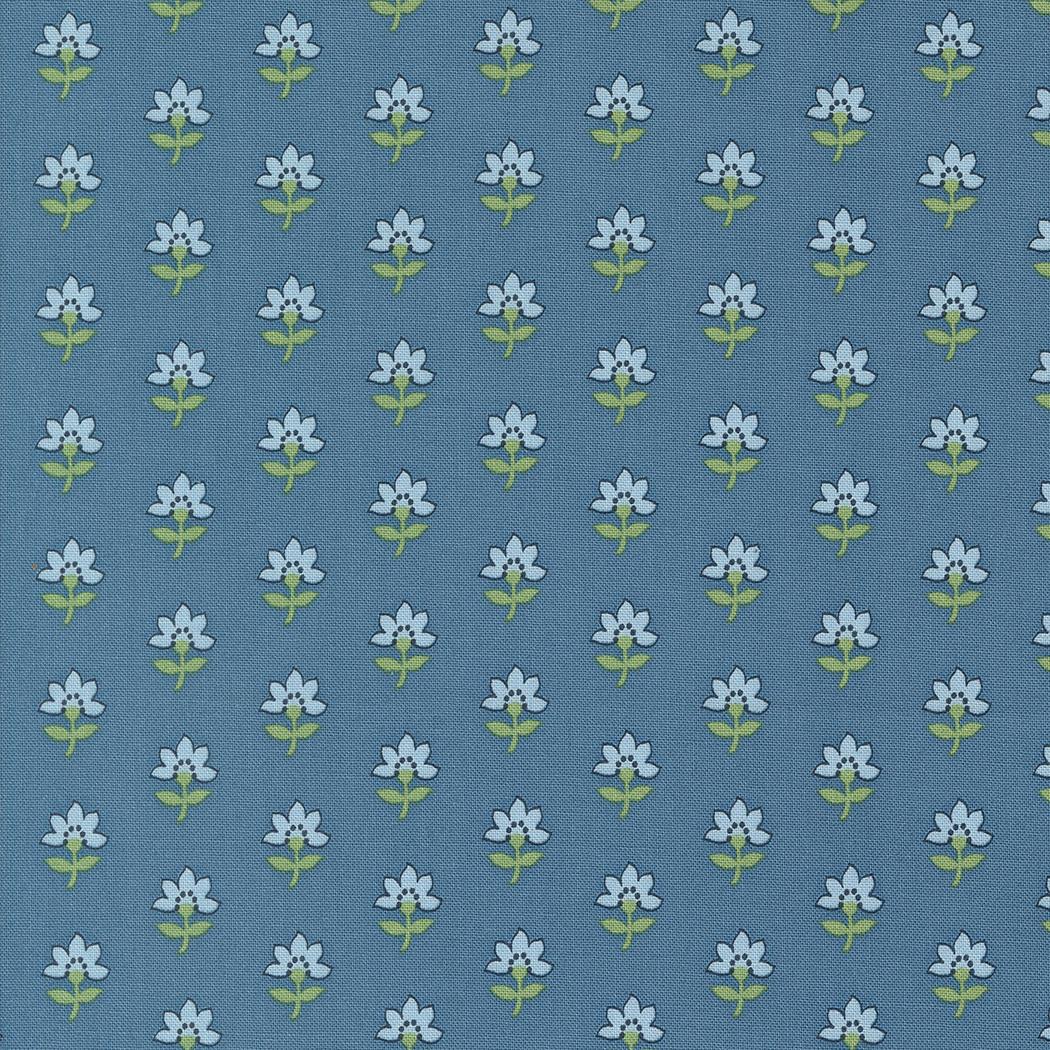

 Cream 55306
Layer C 5530
Mini Ch 55300M
Cream 55306
Layer C 5530
Mini Ch 55300M
SHORELINE
SEWENDIPITOUS WINS
2024 GRAND & REGIONAL PRIZES

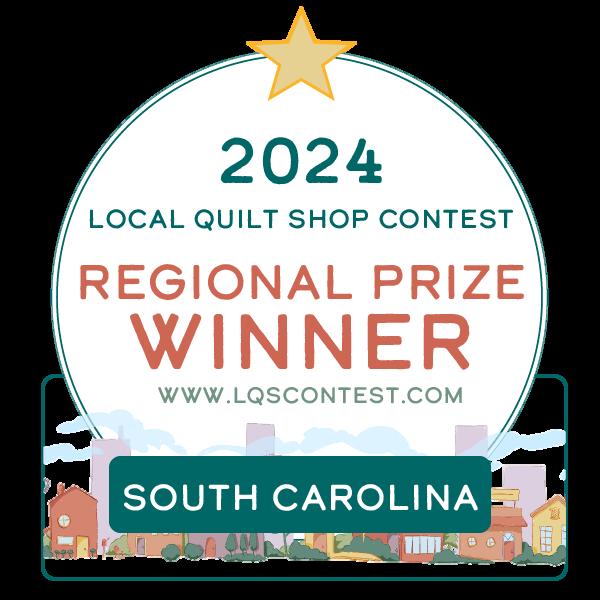
The seventh annual international Local Quilt Shop Contest by ByAnnie com was created to highlight the efforts of local quilt shops and provide the general public an opportunity to show their appreciation This global competition has grown each year to include 12 countries and a whopping 2,249 stores across the globe in 2024
In 2023, having only been open for 1 year, SewEndipitous® won the 2023 Regional Prize, voted the favorite local quilt shop in South Carolina. What a shock and honor that was! In 2024, however, the shop would go on to repeat the Regional SC Win and capture the Grand Prize with the most amount votes in the entire United States.
The community of quilters that support our shop locally and online are truly exceptional people that have embraced SewEndipitous® with arms wide open. Their generous, and clearly competitive spirits, really got behind the shop this year with their voting and they invited others to do the same! There were a lot of tears shed when the winners were announced and the congratulations from our community still continue to pour in
Make no mistake, we thank God each and every day for you and all the support you have literally poured into the shop and upon us individually We love our SewEndipitous® family and want to say thank you again for each and every vote in this contest, as well as every time you visit the shop and website We are incredible blessed to know you all! Thank you!
To learn more about the contest and all th e2024 LQS Contest Winners, check it out at LQScontest com
14 ARTICLE

SEWING FURNITURE DEALS 15

THE
ART OF PERSEVERANCE QUILTING AND SEWING WITH CHRONIC ILLNESSES
by: Steve Baker, SewEndipitous
Quilting and sewing are not just hobbies; they are forms of art that require patience, precision, and a deep sense of creativity For many, these activities serve as a therapeutic escape, a way to express oneself, and a means to create something beautiful and unique However, when one is living with a chronic illness, the physical and mental demands of quilting and sewing can present unique challenges
16 ARTICLE
The importance of this topic extends beyond the realm of crafting. For individuals with chronic illnesses, engaging in activities they love, like quilting and sewing, can significantly enhance their quality of life. It can provide:
A sense of accomplishment.
A distraction from pain or discomfort.
A way to maintain a part of their identity that their illness cannot touch
Here, we aim to shed light on these individuals' struggles and offer practical solutions to help them continue doing what they love It is not merely about overcoming obstacles; it's about perseverance, resilience, and the art of finding joy in the midst of adversity
UNDERSTANDING CHRONIC ILLNESSES
Chronic illnesses are long-term health conditions that may not have a cure and can affect an individual's everyday activities for an extended period. These conditions can range from mild to severe, physical, mental, or both Some common types of chronic illnesses include heart disease, diabetes, arthritis, mental illnesses such as depression and anxiety, and autoimmune diseases like lupus and multiple sclerosis, just to name a few
Chronic illnesses can significantly impact every aspect of an individual's daily life, from self-care to daily routines Unfortunately, that also includes their ability to engage in hobbies and activities they love The physical and mental challenges associated with these conditions can make tasks that were once simple and enjoyable, like quilting and sewing, more difficult.
For instance, someone with arthritis may find it hard to hold a needle or manipulate fabric due to joint pain and stiffness Similarly, a person with emphysema might need to take frequent breaks to avoid overexertion Mental illnesses like depression can also affect motivation and concentration, making it challenging to complete complex quilting or sewing projects
Despite these challenges, many individuals with chronic illnesses find solace and a sense of accomplishment in quilting and sewing These activities can provide a creative outlet and a way to cope with the difficulties of their
conditions. The following sections will delve deeper into the specific challenges faced by individuals with chronic illnesses in quilting and sewing and how they can overcome these obstacles to continue enjoying these fulfilling hobbies.
CHALLENGES OF QUILTING AND SEWING WITH CHRONIC ILLNESSES
Chronic illnesses often come with a host of physical challenges that can make activities like quilting and sewing more difficult. Fatigue is a common symptom of many chronic conditions, making the sustained concentration and effort required for these hobbies challenging. Pain can also be a significant barrier, as these activities often require fine motor skills and can strain certain parts of the body. Mobility issues, such as stiffness or weakness, can also make it challenging to perform the necessary movements for quilting and sewing
In addition to the physical challenges, there are also mental challenges that can arise with chronic illnesses
Concentration issues are common among individuals with chronic conditions, which can make the detailed work required for these hobbies difficult Furthermore, chronic conditions can often lead to feelings of depression and anxiety, which can sap the enjoyment of these activities and make it harder to motivate oneself to start or continue a project. Medications used to treat these conditions can also affect one's thought processes and attention and cause drowsiness and fatigue, further escalating the challenges.
Lastly, there are social challenges that can come with quilting and sewing while having a chronic illness, especially if working in groups, guilds, classes, and sewalongs have been part of the craft that makes it enjoyable
With chronic illness, these activities often become solitary, leading to feelings of isolation Additionally, there can be a lack of understanding from others about the difficulties and limitations that come with chronic illnesses, which can lead to feelings of frustration or alienation
OVERCOMING PHYSICAL CHALLENGES
17 THE ART OF PERSEVERANCE: QUILTING AND SEWING WITH CHRONIC ILLNESSES
help others understand your situation better and provide appropriate support Techniques such as using "I" statements, being specific about your needs, and practicing active listening can enhance your communication skills
Advocating for Yourself and Others with Chronic Illnesses: Advocacy is a powerful tool for those living with chronic illnesses Speaking up about your experiences and challenges can raise awareness and promote understanding among your peers and the wider community This can lead to more inclusive and accommodating environments for quilting and sewing. Additionally, advocating for others with chronic illnesses can foster a sense of solidarity and mutual support within your community. This can be done through various means, such as sharing resources, participating in awareness campaigns, or even teaching others about the therapeutic benefits of quilting and sewing. Most quilting communities are filled with incredibly giving and supportive people willing to do whatever it takes to keep their members involved That means you!
CONCLUSION
As we conclude this exploration into the world of quilting and sewing with chronic illnesses, it's important to recap the strategies we've discussed for overcoming the various challenges that may arise From adaptive tools and techniques for managing physical symptoms to the therapeutic benefits of quilting and sewing for mental health and the importance of building a supportive community, these strategies can help individuals navigate their hobbies amidst their health conditions
However, it's crucial to remember that everyone's journey with chronic illness is unique What works for one person may not work for another, and it's okay to struggle and have bad days. The important thing is to persevere and find joy in the things you love and can still perform, like quilting and sewing. Make no mistake, a chronic illness condition is life-changing, and that requires an acceptance of the change and coming to terms with a new reality. All the emotions of grief come into play. Give yourself the time and grace to process everything. It's okay to be angry. Cry when you need to. That's part of healing and acceptance.
We encourage those struggling with these issues to reach out for support, communicate their needs, and advocate for themselves and others Through understanding and empathy, we can create a more inclusive and supportive environment for people with chronic illnesses who are engaged in quilting and sewing
Finally, we call upon everyone to extend their understanding and support to people with chronic illnesses Let's create a world where everyone, regardless of their health conditions, can enjoy their hobbies and passions without fear of judgment or misunderstanding. Chronic illnesses don't have to mean an end to personal expression and the creation of beautiful things. If anyone can turn an unfortunate situation into a work of art - it is the quilter & sewist.
Lastly, let's close with the obligatory legal disclaimer: This article is intended for informational purposes only It is not a substitute for professional medical advice, diagnosis, or treatment Always seek the advice of your healthcare provider with any questions you may have regarding a medical condition or treatment and before undertaking a new health care regimen, including the continuation of quilting and sewing activities Never disregard professional medical advice or delay in seeking it because of something you have read in this article or our other blog posts
19 THE ART OF PERSEVERANCE: QUILTING AND SEWING WITH CHRONIC ILLNESSES
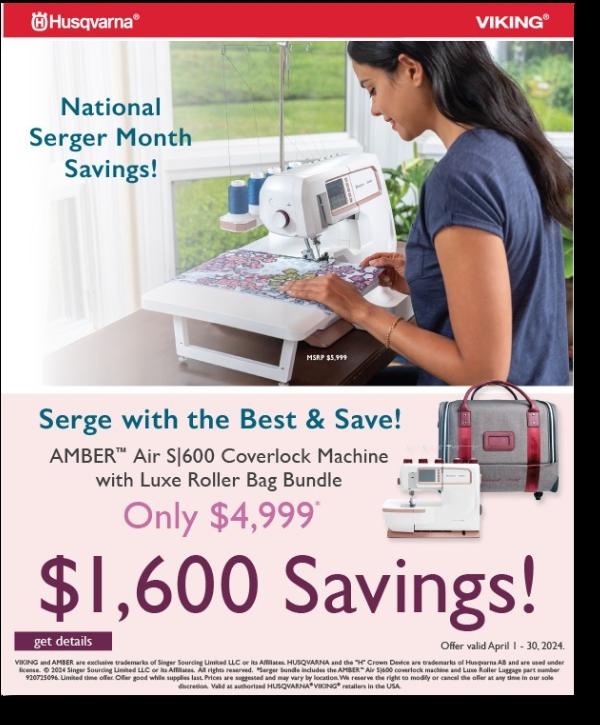
SEWING MACHINES & ACCESSORIES DEALS 20

SEWING MACHINES & ACCESSORIES DEALS 21
Chickadee Landing
After a long, cold Kansas winter, I’m always excited for the first signs of spring. I wait anxiously for the tulips to poke through the last snow, listen for the chickadee's song, and savor the warm breeze as the world turns green again. It’s a time for renewal and fresh starts A vegetable garden sketched on a scrap of paper and a trip to the nursery Blowing bubbles and discovering dandelions with the newest little family member. My Chickadee Landing collection evokes those memories with a sweet little blooming vine print and coordinating florals and geometrics in colors as fresh as springtime.

Manufacturer: Moda Fabrics
Description: 100% Cotton
Type: 44"- 45" Wide
Designer: Kansas Troubles
Group Name: Chickadee Landing
Theme: 1800's

CHICKADEE LANDING


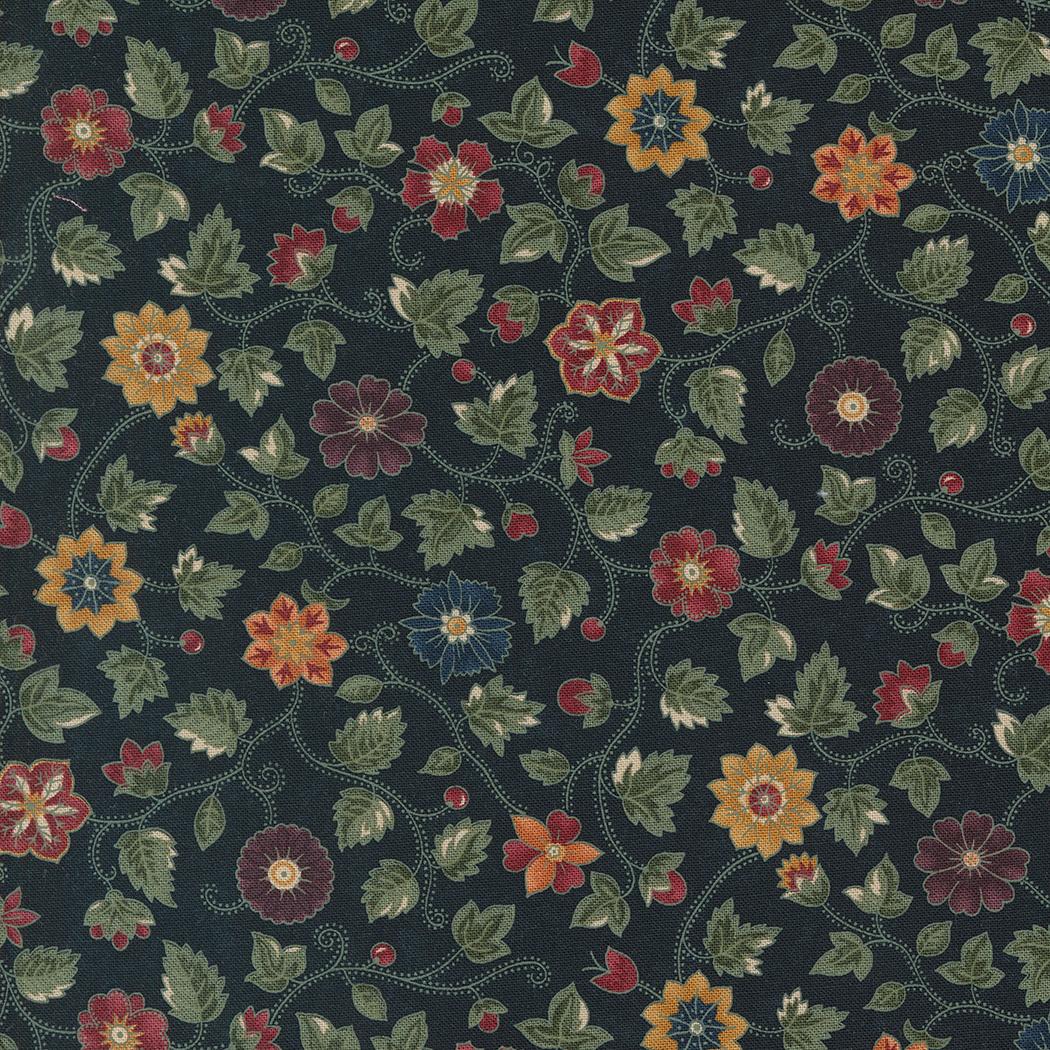
CHICKADEE LANDING
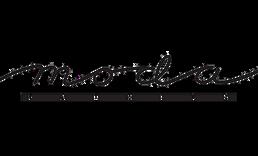
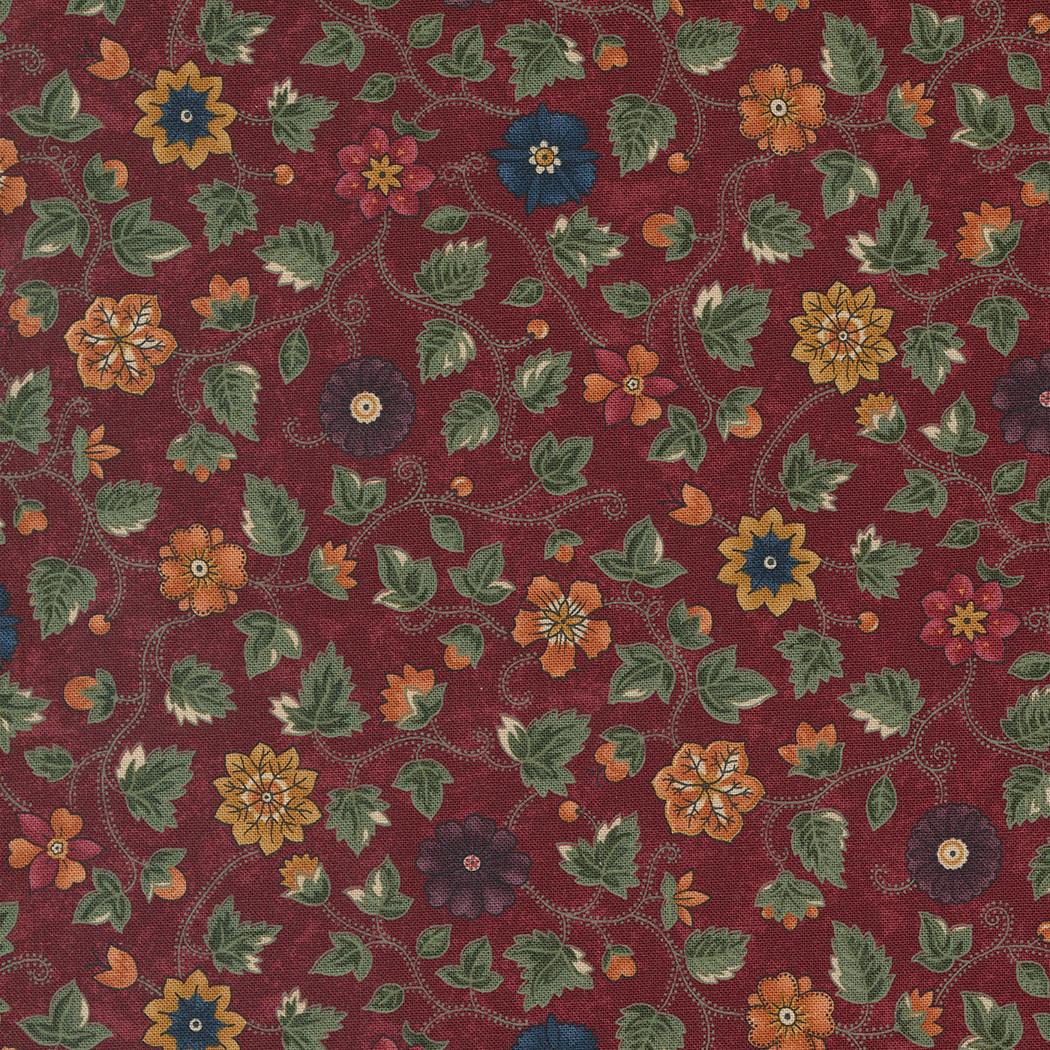
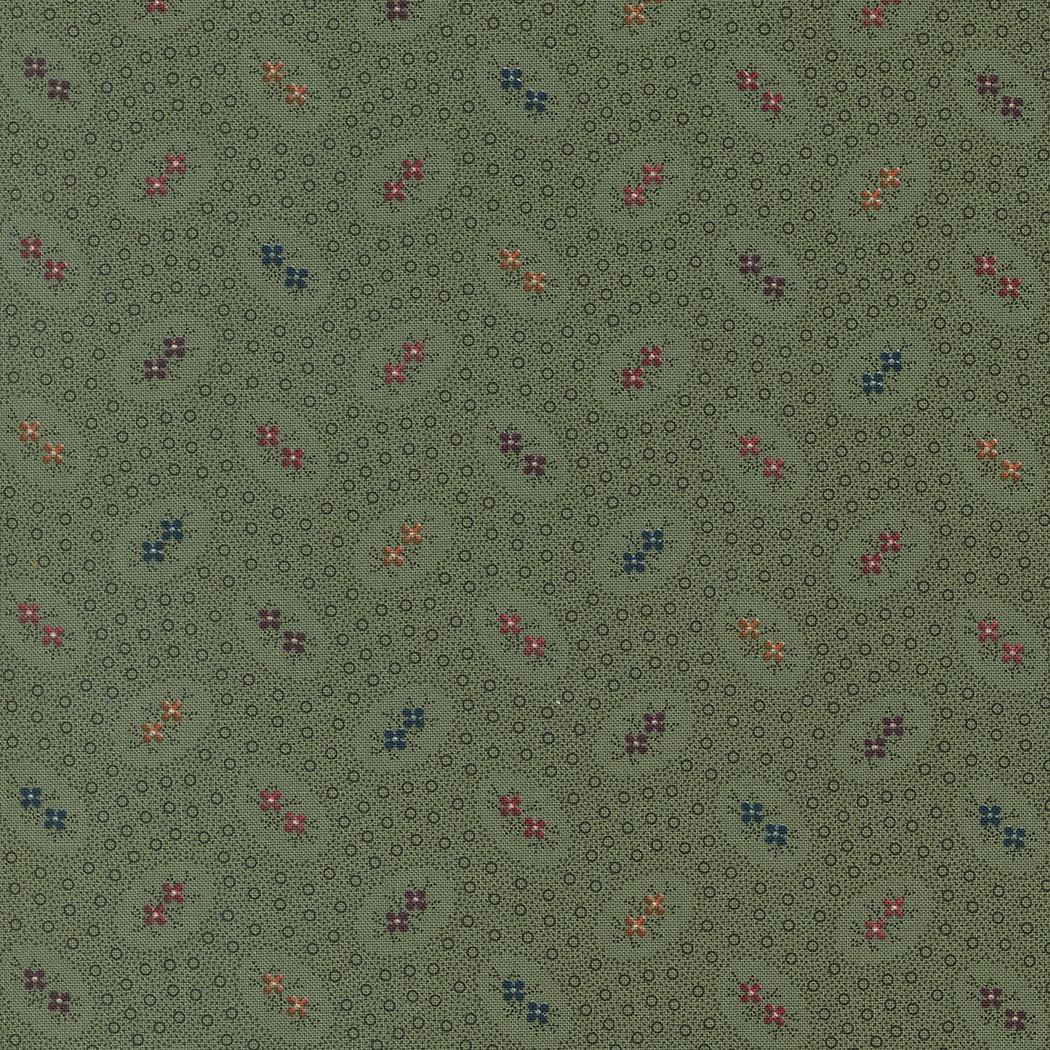
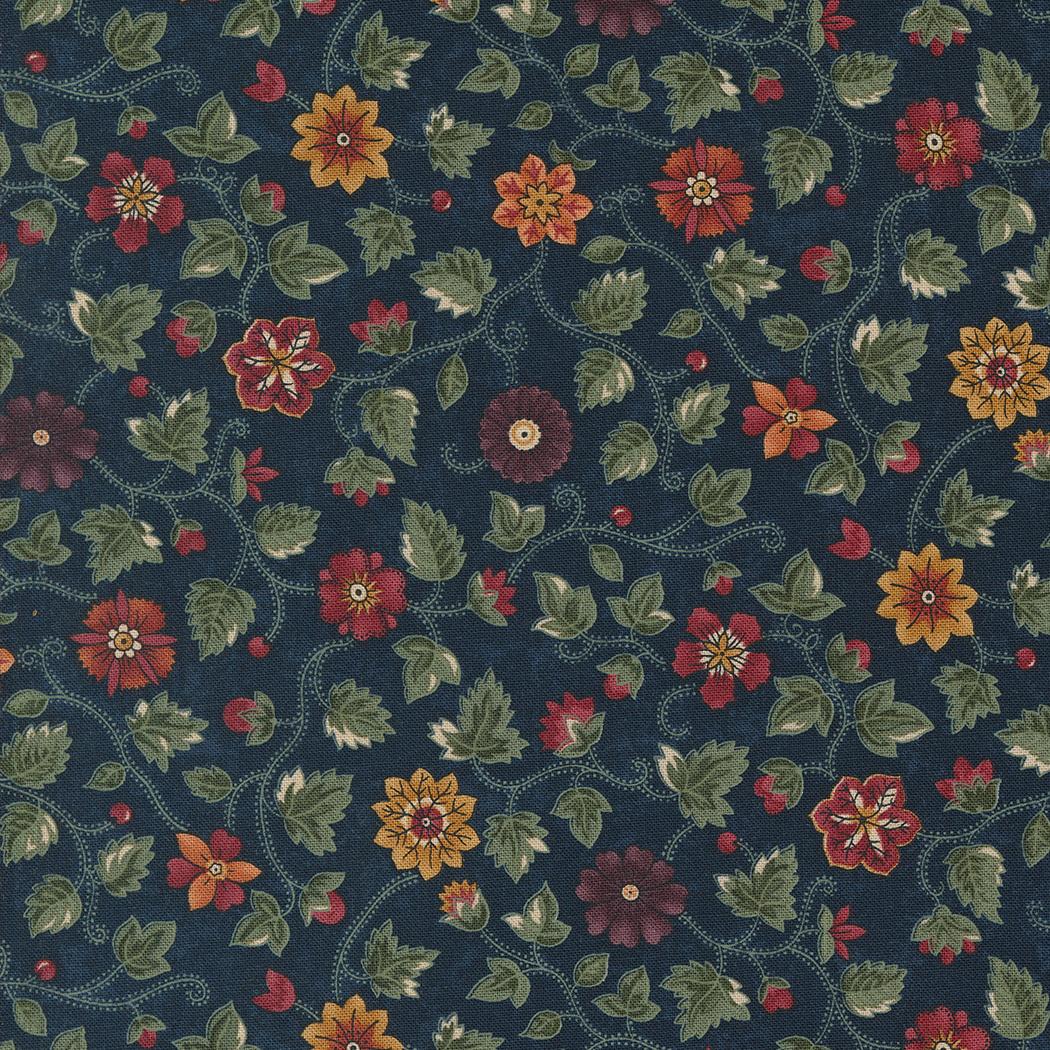

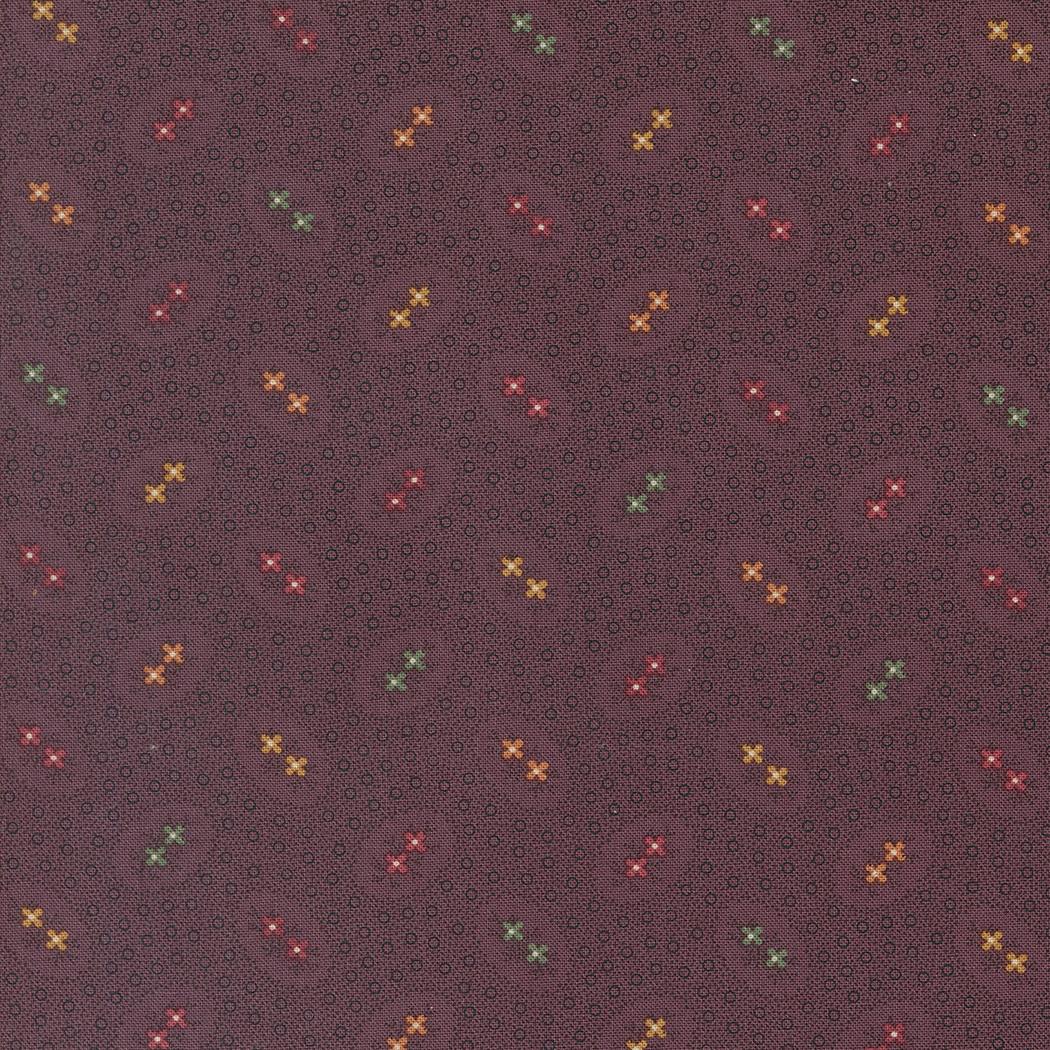

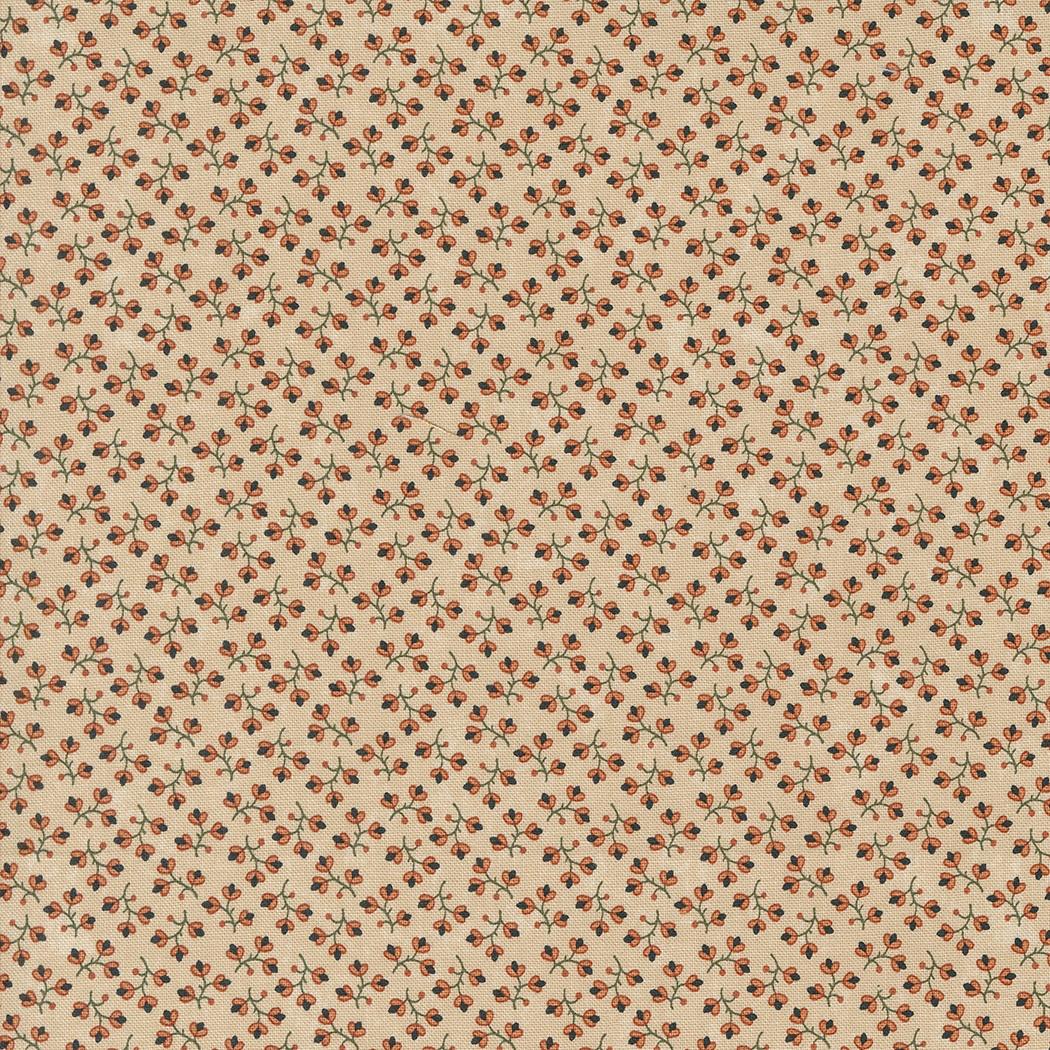 DANDELION MUL 9743 11
SUNFLOWER 9742 12
BLUEBELL 9740 14
CROCUS 9742 16
DANDELION MUL 9742 11
POPPY 9740 13
LEAF 9742 15
MULCH 9740 19
DANDELION MUL 9740 11
DANDELION MUL 9743 11
SUNFLOWER 9742 12
BLUEBELL 9740 14
CROCUS 9742 16
DANDELION MUL 9742 11
POPPY 9740 13
LEAF 9742 15
MULCH 9740 19
DANDELION MUL 9740 11
24
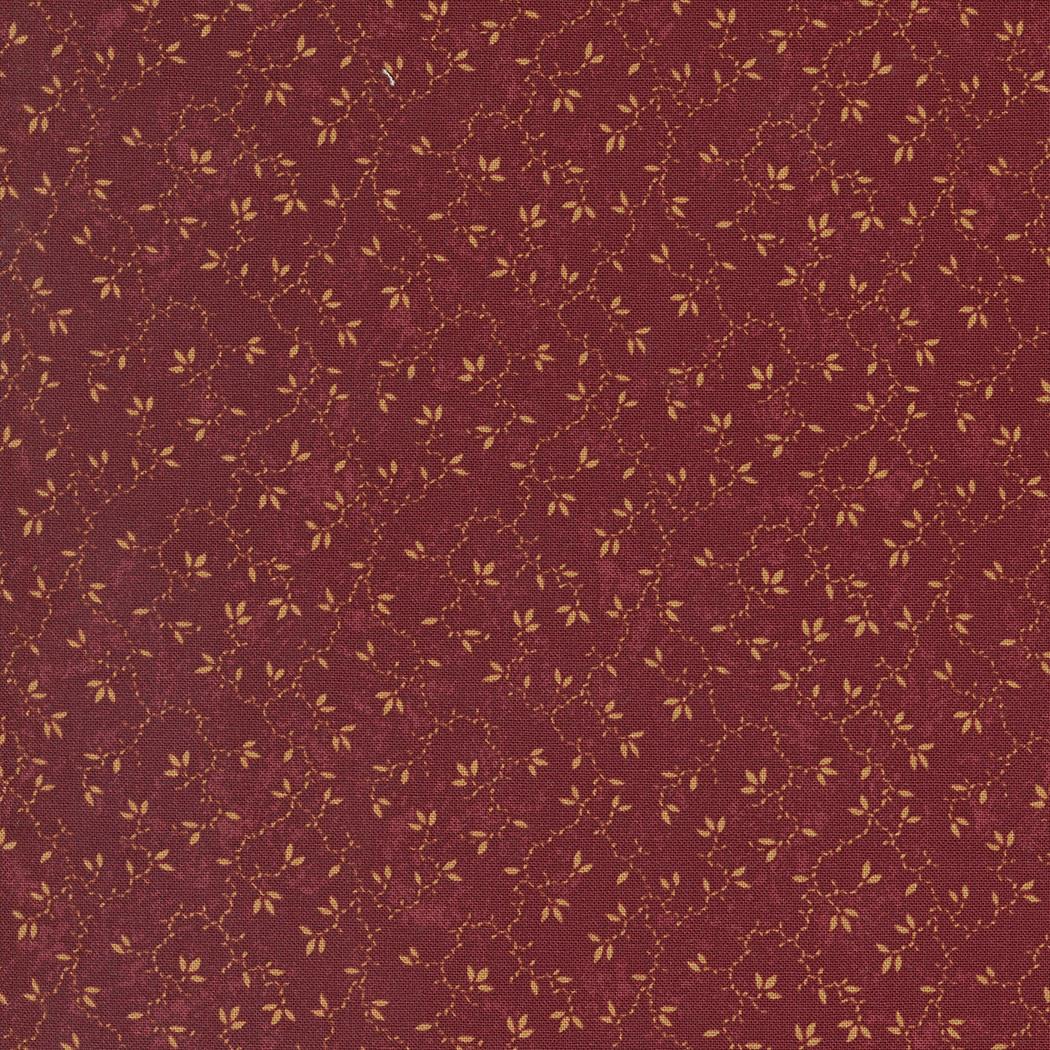



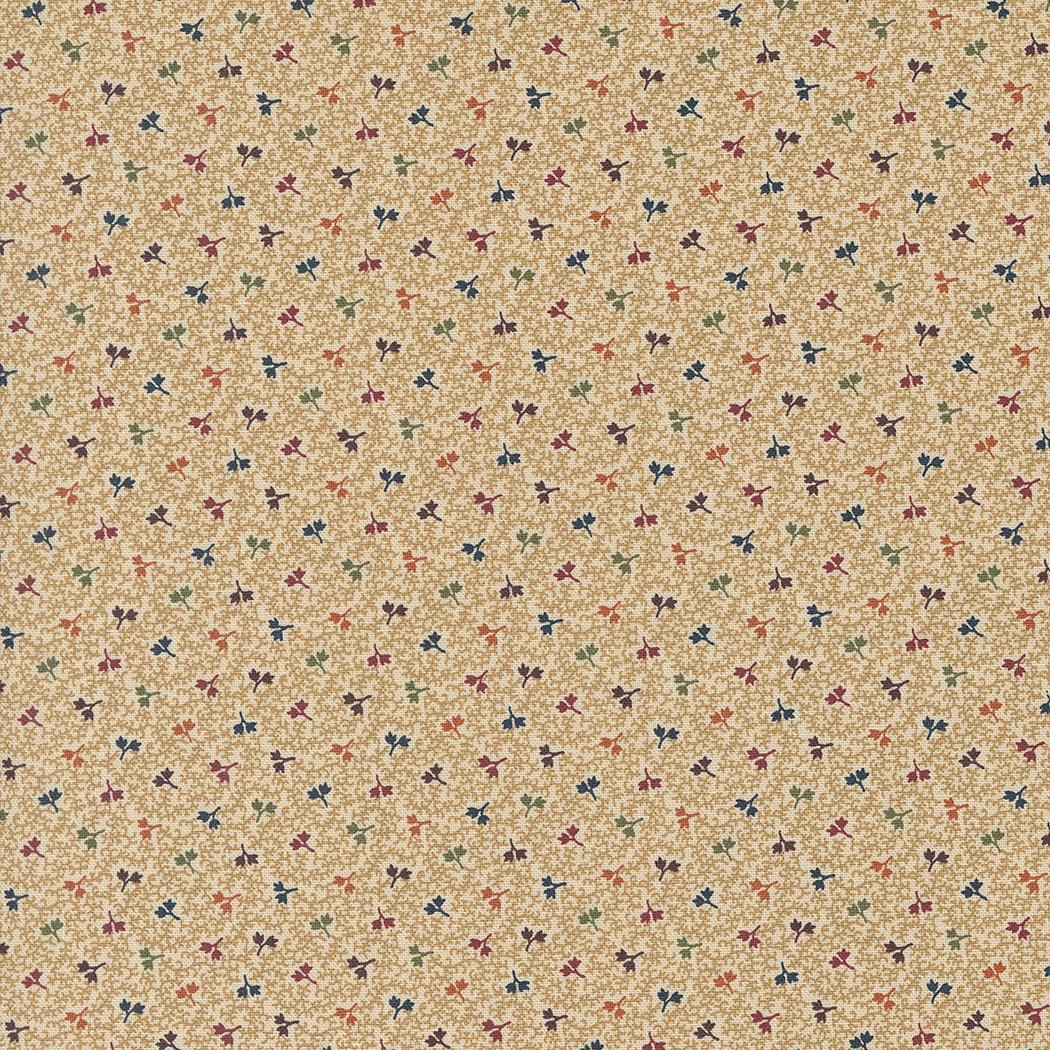
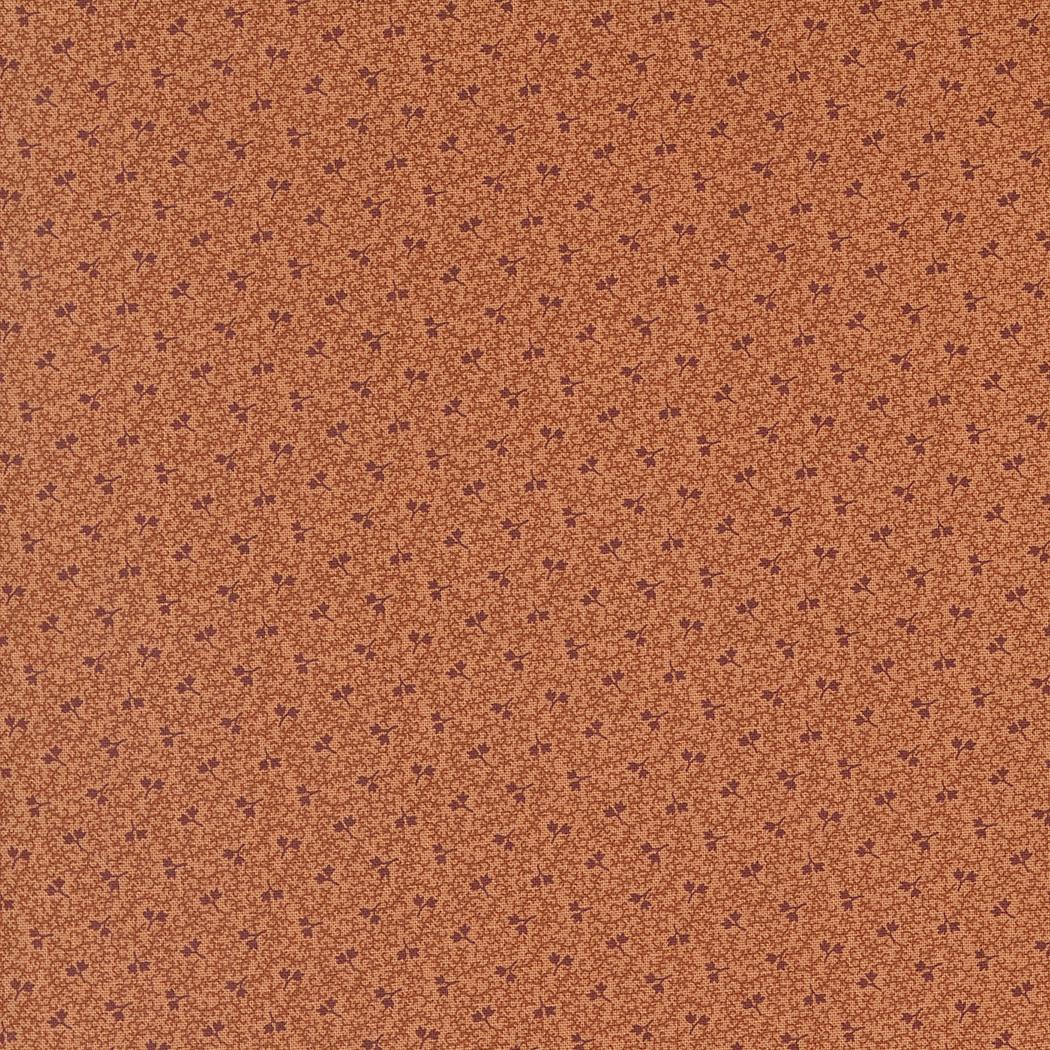
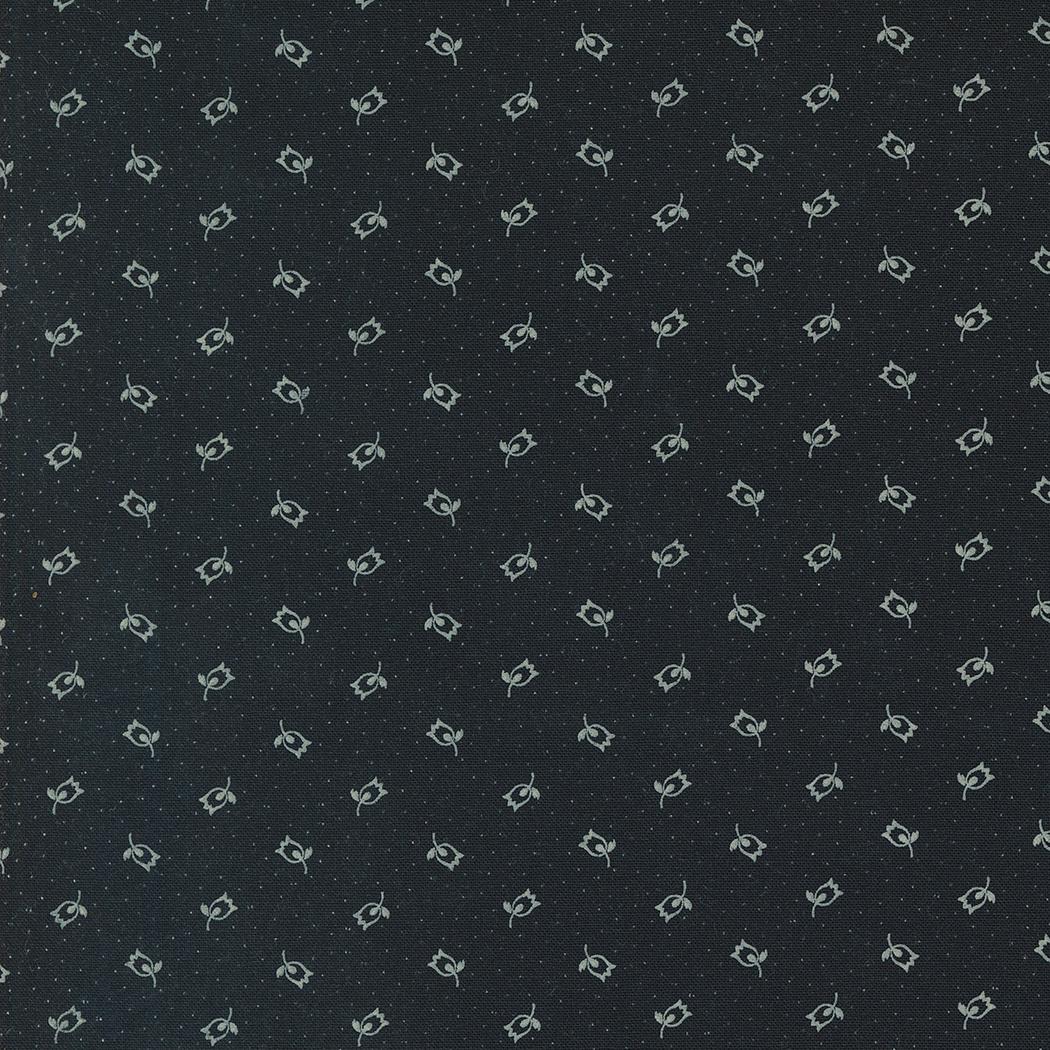
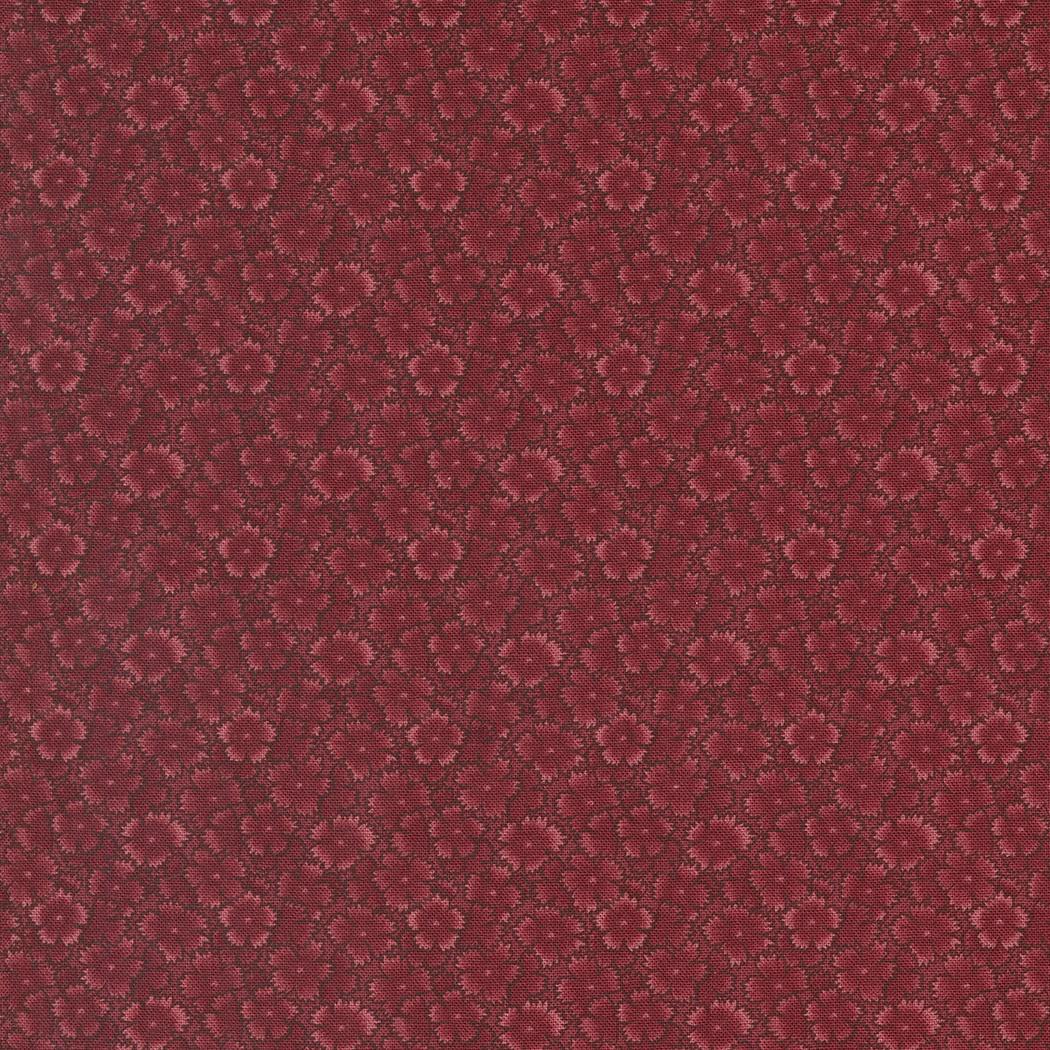

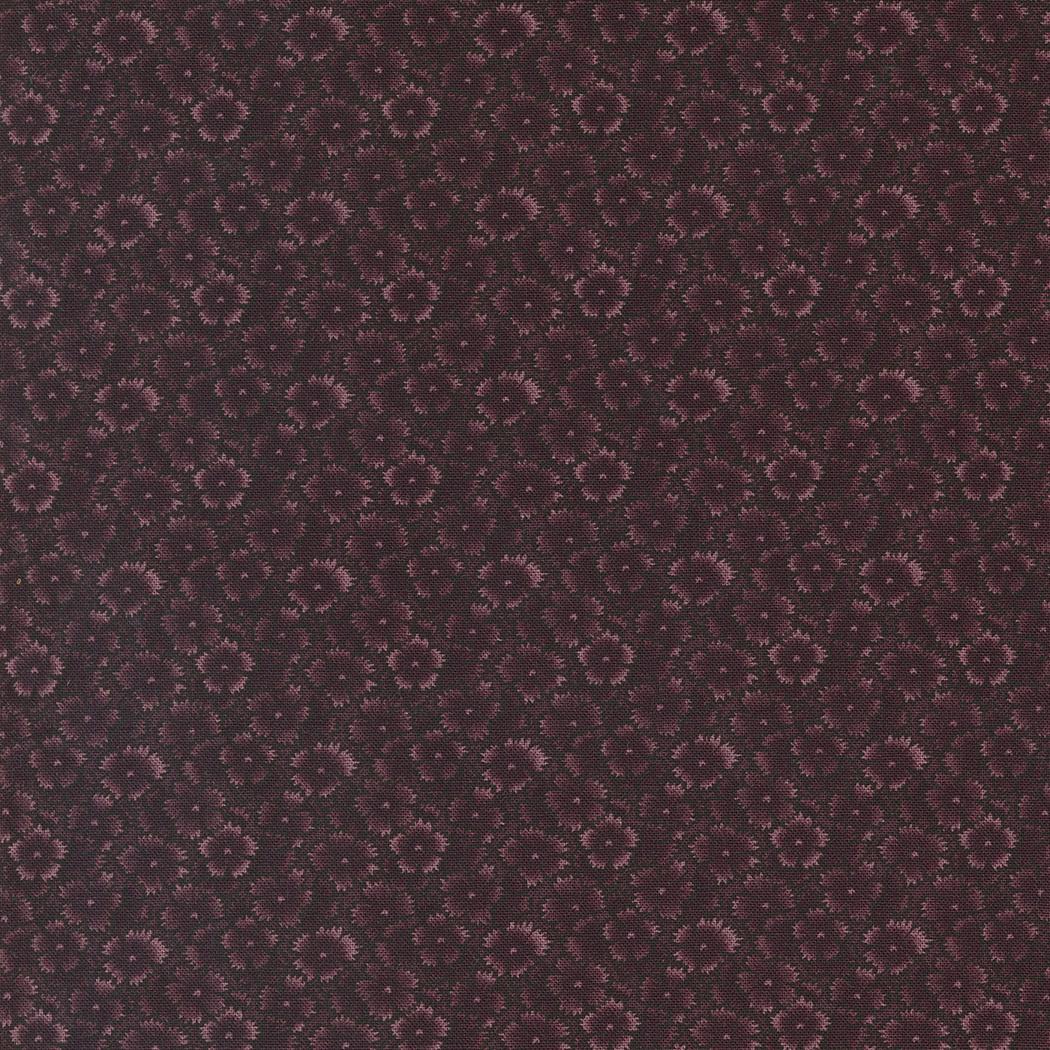 BLUEBELL 9748 14
LEAF 9747 15
MULCH 9745 19
POPPY 9748 13
DANDELION MUL 9747 11
BLUEBELL 9744 14
TIGER LILY 9747 17
LEAF 9746 15
BLUEBELL 9748 14
LEAF 9747 15
MULCH 9745 19
POPPY 9748 13
DANDELION MUL 9747 11
BLUEBELL 9744 14
TIGER LILY 9747 17
LEAF 9746 15
LANDING 25
POPPY 9744 13
CHICKADEE

QUILTING OUTSIDE MY COMFORT ZONE TRANSITIONING FROM A TRADITIONAL TO MODERN QUILTING STYLE
by: Steve Baker, SewEndipitous
Quilting, a time-honored tradition, has been a comforting and creative outlet for many generations. The appeal of traditional quilting lies in its familiarity and the sense of connection it provides to the past. Traditional quilting patterns, such as the Log Cabin, the Double Wedding Ring, or the Dresden Plate, have been passed down through generations, each stitch writing a story just as words complete a book
The comfort of traditional quilting is about more than just the patterns It's also about the process - the rhythmic, repetitive motion of the needle through the fabric, the slow accumulation of stitches forming a pattern, and the satisfaction of seeing a project come together piece by piece It's a practice that requires patience, precision, and a certain amount of reverence for the craft's history
26 ARTICLE
Many quilters stick to traditional quilting because it's what they know and love, and as long as it brings them joy, they just keep stitching. It's a style that's been perfected over centuries, and there's a certain comfort in knowing that you're participating in a tradition passed down through generations. For many, it's a genuine connection to the past. But as comforting as traditional quilting can be, there's a whole world of modern quilting out there waiting to be explored that is, quite honestly, as deeply rich and certainly as creative as anything you've experienced in the past.
In the following sections, we'll discuss transitioning from traditional to modern quilting, providing tips and strategies to help you step outside your quilting comfort zone. There is a lot to be discovered out there. Whether you're a seasoned quilter looking to try something new or a beginner eager to dive into the world of modern quilting, this guide is for you Be bold, be brave, be adventurous Let's embark on this exciting quilting journey together
THE ALLURE OF MODERN QUILTING
Modern quilting, a vibrant and innovative evolution of the traditional craft, has been steadily gaining popularity in recent years Indeed, the world of cable television and social media have been instrumental in that growth This quilting style is characterized by its departure from the conventional rules, offering a fresh perspective on a beloved pastime
At the heart of modern quilting is the freedom of design - almost unrestrained freedom, some would argue, but that doesn't have to be scary Unlike traditional quilting, which often follows specific patterns and designs, modern quilting encourages individual creativity and experimentation Don't be scared! Hear me out! Quilters can play with asymmetry, improvise with their designs, and even incorporate elements from other art forms This freedom allows for a level of personal expression often not found in traditional quilting, making each quilt a unique piece of art I would argue that point, but we'll leave it to history to determine that
Another appealing aspect of modern quilting is bold colors and unconventional patterns While traditional quilts often feature muted tones and intricate patterns, modern quilts are known for their vibrant color palettes and bold geometric designs. Stated differently, it's okay to go crazy and think outside the norm. These elements add a contemporary touch to the quilts, making them functional and stylish home decor and gifting items. This doesn't take away or diminish the meaningfulness of the completed project or the love you infuse into it. Modern quilts still carry all the intangible sentimentality that traditional quilting is known for.
The most enticing aspect of modern quilting is its break from convention. While traditional quilting is deeply rooted in the past and often follows strict rules, modern quilting is all about pushing boundaries and trying new things. This break from tradition can be liberating for many quilters, allowing them to explore new techniques and ideas without feeling constrained by the rules of the past
Modern quilting offers a fresh and exciting take on a time-honored craft With its emphasis on personal expression, bold designs, and innovative techniques, it's no wonder that more and more people are drawn to this vibrant quilting style Whether you're a seasoned quilter looking to try something new or a beginner eager to make your mark, modern quilting offers endless possibilities for creativity and innovation
THE CHALLENGES OF TRANSITION
Transitioning from traditional to modern quilting can be daunting for many The shift involves learning new techniques, overcoming the fear of making mistakes, stepping out of one's comfort zone, and, I dare say, defying the expectations and opinions of diehard traditionalists you might be surrounded by
27 QUILTING OUTSIDE MY COMFORT ZONE
Traditional quilting, with its well-established patterns and techniques, provides a sense of security and familiarity It's a world where every stitch and piece of fabric has its place. However, modern quilting, emphasizing bold colors, unique patterns, and freedom of design, can seem like uncharted territory for those accustomed to the traditional style. Fear not; however, none of this is meant to imply there aren't beautifully designed modern quilt patterns available. In fact, modern quilt patterns are extremely popular, with countless options available for all skill levels.
One of the main challenges in this transition is the learning curve involved in mastering new techniques. For example, modern quilting sometimes involves improvisational piecing, where quilters create their designs as they go along rather than following a predetermined pattern. This can be intimidating for those used to the precision and predictability of traditional quilting, which is why the aforementioned modern patterns can help ease your transition. I liken this to the traditional crazy quilting technique, which is just one of many options to explore
Another challenge is overcoming the fear of making mistakes In traditional quilting, a misplaced stitch or a poorly matched seam can be glaring errors But these "mistakes" can become part of the design in modern quilting, adding to its uniqueness and charm It takes time and patience to embrace this new mindset and to see these "imperfections" as creative opportunities rather than flaws
While the transition from traditional to modern quilting can be challenging, it is also an opportunity for growth and creativity It's a journey that requires patience, openness to new experiences, and willingness to make and learn from mistakes But for those who dare to step out of their comfort zone (I'm hoping that is you!), the rewards can be immense
TOOLS AND MATERIALS FOR MODERN QUILTING
As we embark on the journey from traditional to modern quilting, we must familiarize ourselves with the tools and materials that will aid us in this transition While rooted in the same basic principles as traditional quilting, modern quilting often requires a different set of tools and materials to explore its potential fully
Firstly, let's talk about fabric. Modern quilting often utilizes bold, vibrant colors, unconventional designs, and patterns that can dramatically differ from the more subdued and repetitive patterns found in traditional quilting. This shift in aesthetic preference means that quilters transitioning to modern styles may need to expand their fabric collections. Look for fabrics with geometric patterns, high-contrast color combinations, and abstract designs. Searching out modern fabric collections and working within that collection helps quilters who need help figuring out where to start. These designers have made the fabric selection process much easier and quicker.
Next, we have cutting tools. While traditional quilting often involves using simple squares, triangles, or templates to cut out specific shapes, modern quilting encourages free-form cutting and improvisation. A good quality rotary cutter and self-healing cutting mat are invaluable tools They allow for quick, precise cuts and can handle a variety of fabric weights Traditional quilters unfamiliar with the myriad of specialized rulers and tools are in for quite a treat! If nothing else comes from your exploration, discovering new time-saving tools is worth the journey outside your comfort zone That's a promise!
Most sewing machines suitable for traditional quilting will work just fine for modern quilting However, some modern quilters prefer machines with a larger throat space to accommodate the bulk of a quilt during machine quilting Additionally, a machine with various stitch options can be beneficial for adding decorative topstitching or other embellishments to your quilt
Lastly, remember threads Modern quilting often features bold, visible stitching, so a collection of high-quality threads in various colors is necessary
28 QUILTING OUTSIDE MY COMFORT ZONE
Transitioning from traditional to modern quilting can be an exciting journey, and having the right tools and materials can make the process smoother and more enjoyable. So, don't be afraid to experiment and find what works best for you in this vibrant and creative world of modern quilting.
TECHNIQUES AND TIPS FOR MODERN QUILTING
As we delve deeper into the world of modern quilting, it's essential to arm ourselves with the proper techniques and tips. This section will briefly guide you through the process of choosing colors and patterns, designing a modern quilt, and sewing with different materials.
Choosing colors and patterns for a modern quilt can be exciting yet challenging. Unlike traditional quilting, which often follows a set pattern or color scheme, modern quilting encourages quilters to experiment with daring, contrasting colors and innovative patterns. Don't be afraid to step outside your comfort zone to try something new. Look for inspiration in modern art, architecture, and nature. Even easier, explore it on Pinterest!
Designing a modern quilt is another area where you can let your creativity shine Modern quilts often feature asymmetrical designs, negative space, and improvisational piecing Start with a simple design and gradually incorporate more complex elements as you gain confidence Sketching your design on graph paper or using quilting design software can help you visualize your quilt before you start sewing
When sewing a modern quilt, your chosen materials can significantly impact the final result Cotton is a popular choice due to its durability and ease of use, but don't limit yourself to just one type of fabric Experiment with different materials like linen, silk, or recycled fabrics to add texture and interest to your quilt
Remember, the key to successful modern quilting is to embrace the process of learning and experimenting Don't be afraid to make mistakes - they're just opportunities for growth and creativity
INSPIRATION AND IDEAS
Inspiration abounds in modern quilting From the bold geometric patterns that define the style to the innovative quilters who are pushing the boundaries of what a quilt can be, there is no shortage of ideas to spark your creativity
Modern quilting is not just about the final product but also the creation process It's about breaking the rules when you want, experimenting with colors and patterns, and finding your unique voice in the quilting world.
One of the best ways to find inspiration for your own modern quilts is to look at the work of others. There are many talented modern quilters, each with a unique style and approach. Some prefer bold, graphic designs, while others lean towards a more subtle, minimalist aesthetic. I personally find great beauty in simple black and gray quilts that pay respect to the beauty of white space!
Social media platforms like Instagram and Pinterest are great places to discover new quilters and see their work. Numerous blogs and online forums also exist where quilters share their projects, techniques, and tips A simple Google® search for "modern quilters" will yield more than enough results to inspire you
In addition to looking at other quilts, you can find inspiration in the world around you The shapes and patterns found in architecture, nature, and everyday objects can all be starting points for your designs
Remember, the key to modern quilting is to make it your own Feel free to experiment, take risks, and, most importantly, have fun with it After all, the beauty of modern quilting lies in its limitless possibilities
29 QUILTING OUTSIDE MY COMFORT ZONE
EMBRACING THE NEW WHILE HONORING THE OLD
As we conclude our exploration of modern quilting, it's important to remember that embracing this new style does not mean abandoning the traditional quilting we hold dear Instead, it's about expanding our quilting horizons, pushing our creative boundaries, and adding another layer to our quilting repertoire
Modern quilting, with its courageous colors, clever designs, and freedom from traditional rules, offers a fresh perspective on a beloved craft It's an invitation to experiment, play, and create something unique But it's also a challenge, requiring us to learn new techniques, to step outside our comfort zones, and to accept that mistakes are part of the process
For those nervous about making the transition, remember that every quilter, no matter how experienced, was once a beginner It's okay to feel unsure It's okay to make mistakes What's important is that you keep trying, keep learning, and keep quilting.
So, as you embark on your modern quilting journey, take with you the skills and traditions of the past, but also embrace the possibilities of the future. Honor the old, but be bold and explore the new. After all, quilting is not just about creating a beautiful piece of art but also about the joy of the process, the satisfaction of learning, and the thrill of creation.
In the end, whether you're a traditional quilter, a modern quilter, or somewhere in between, remember this: Quilting is a journey, not a destination. So, listen to the hum of the sewing machine, watch the stitches fly by like the intermittent dotted lines along the highway, and simply enjoy the ride The wonderful world outside your comfort zone is waiting to welcome you!


QUILTING OUTSIDE MY COMFORT ZONE

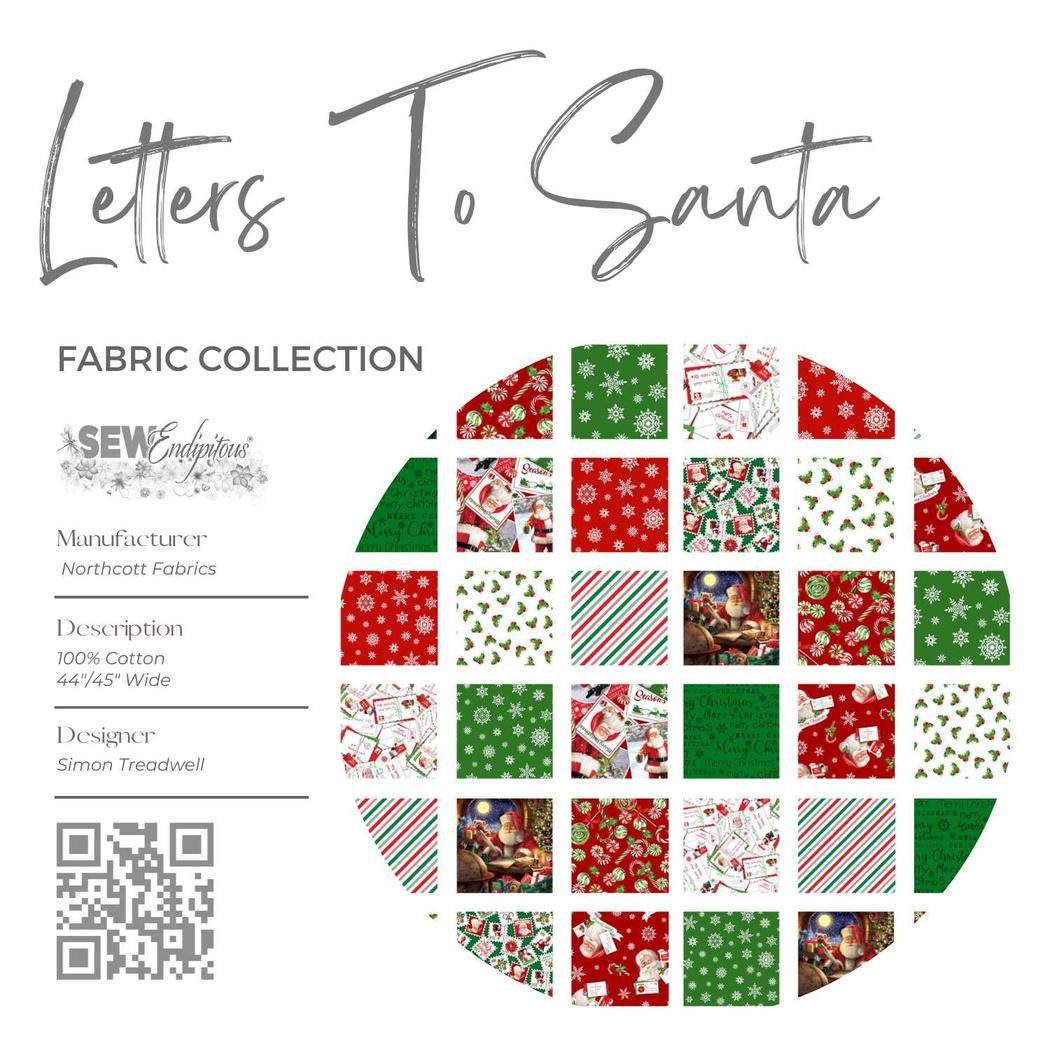

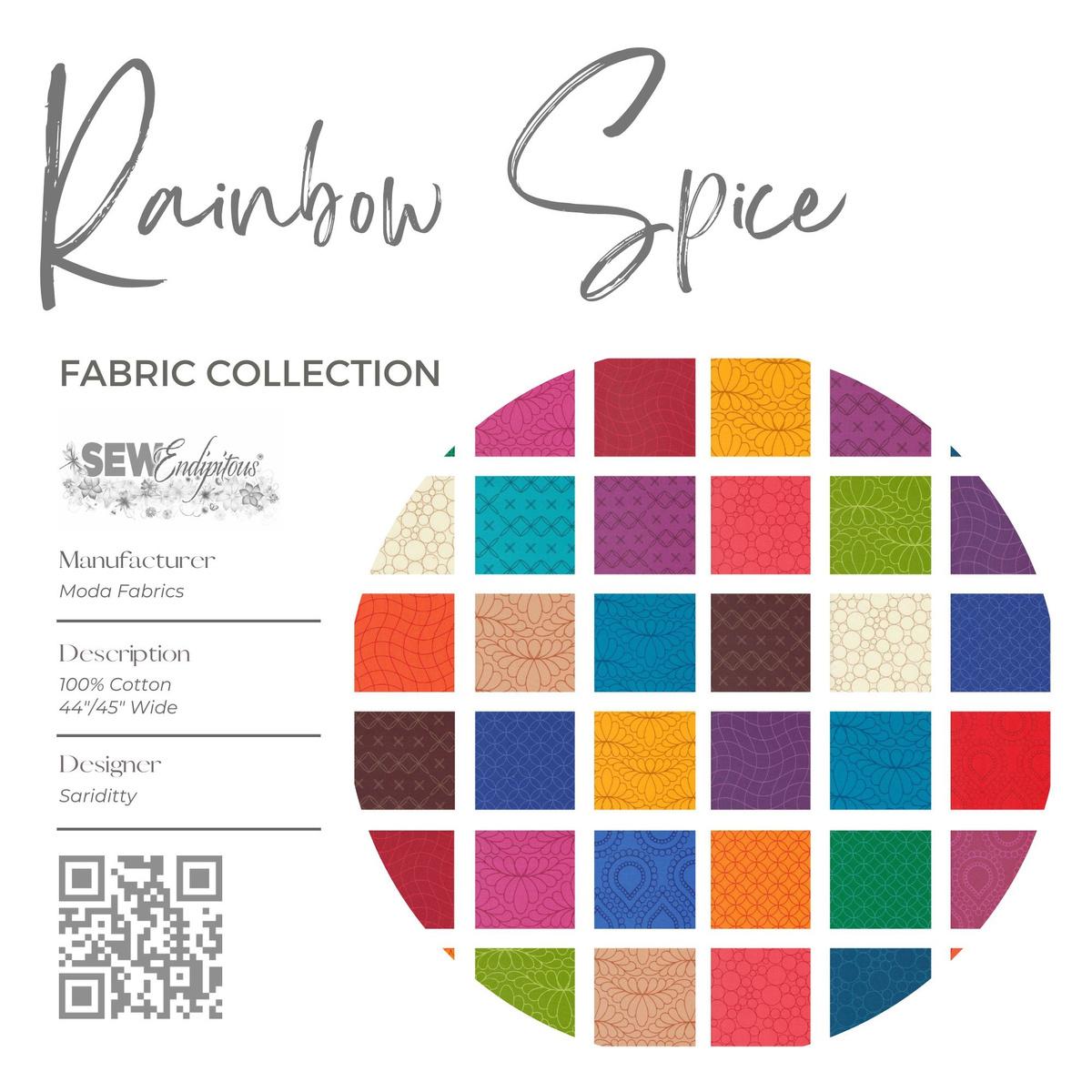
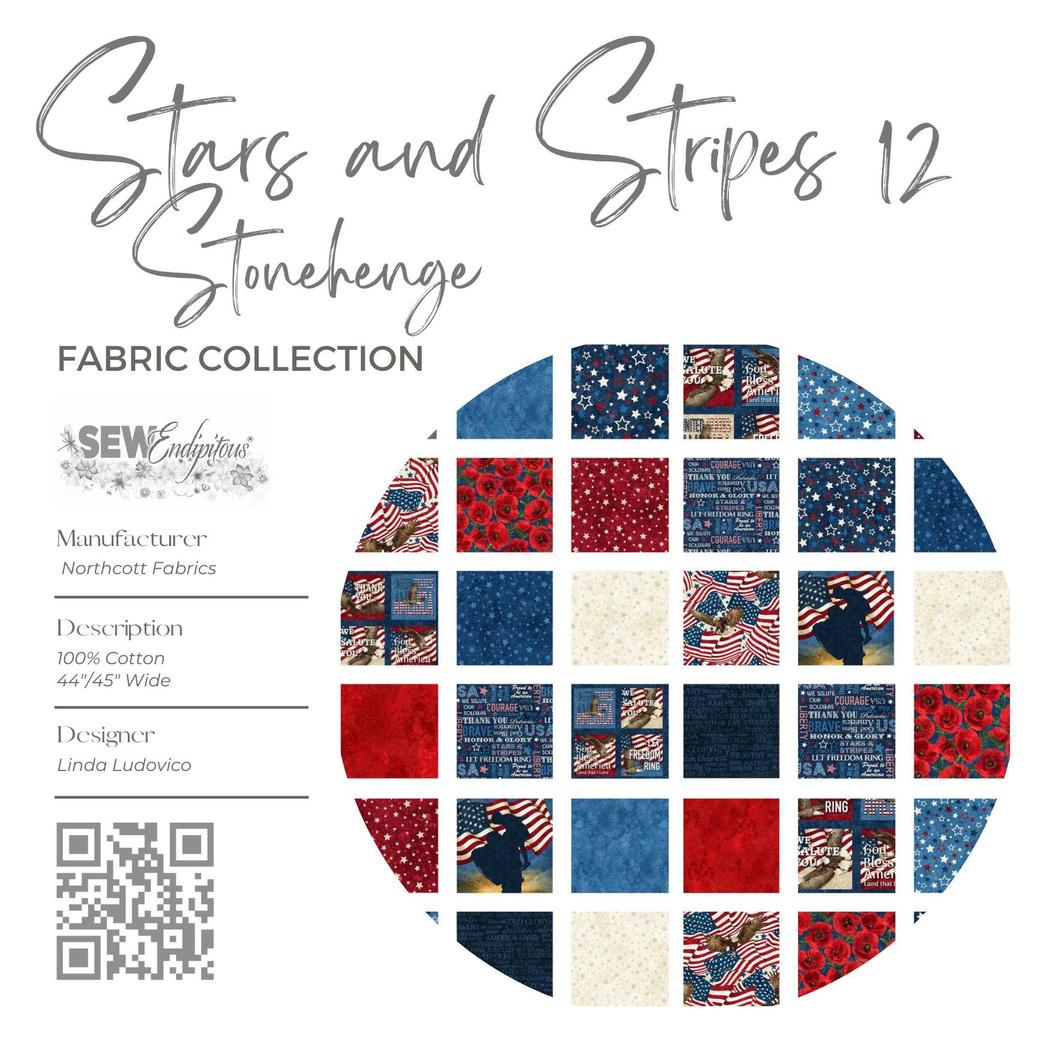
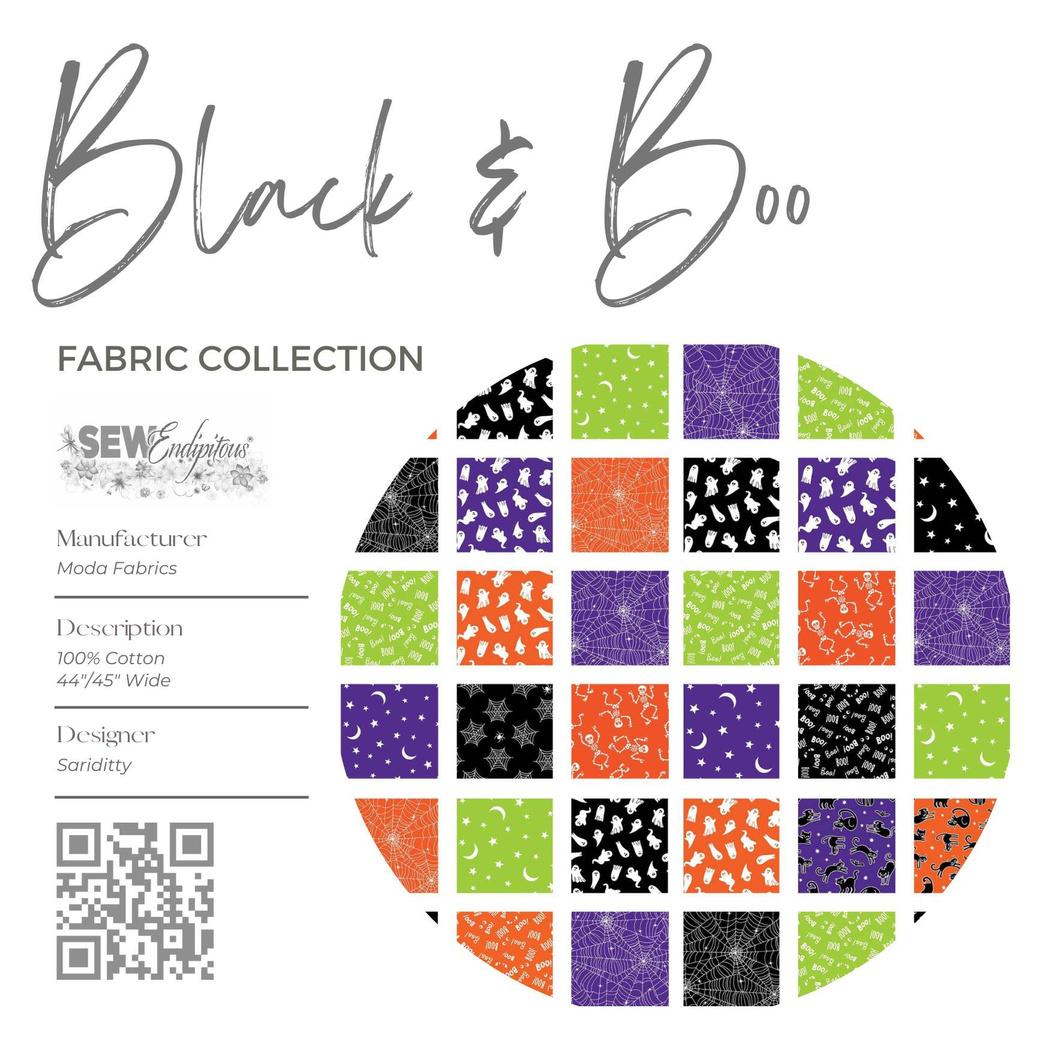
COMING SOON 31
Chelsea Garden
Please welcome, 1970's London inspired, Chelsea Garden. Featuring lush florals picked right from the show gardens of Chelsea and extravagant paisleys in a rich color palette of peacock green, navy blue, goldenrod, plum, rose, and mulberry. With an array of 30 cotton prints and 9 cotton lawn prints, you’re sure to bring home Best In Show for your next project.

Manufacturer: Moda Fabrics
Description: 100% Cotton
Type: 44"- 45" Wide
Designer: Moda
Group Name: Chelsea Garden
Theme: Florals
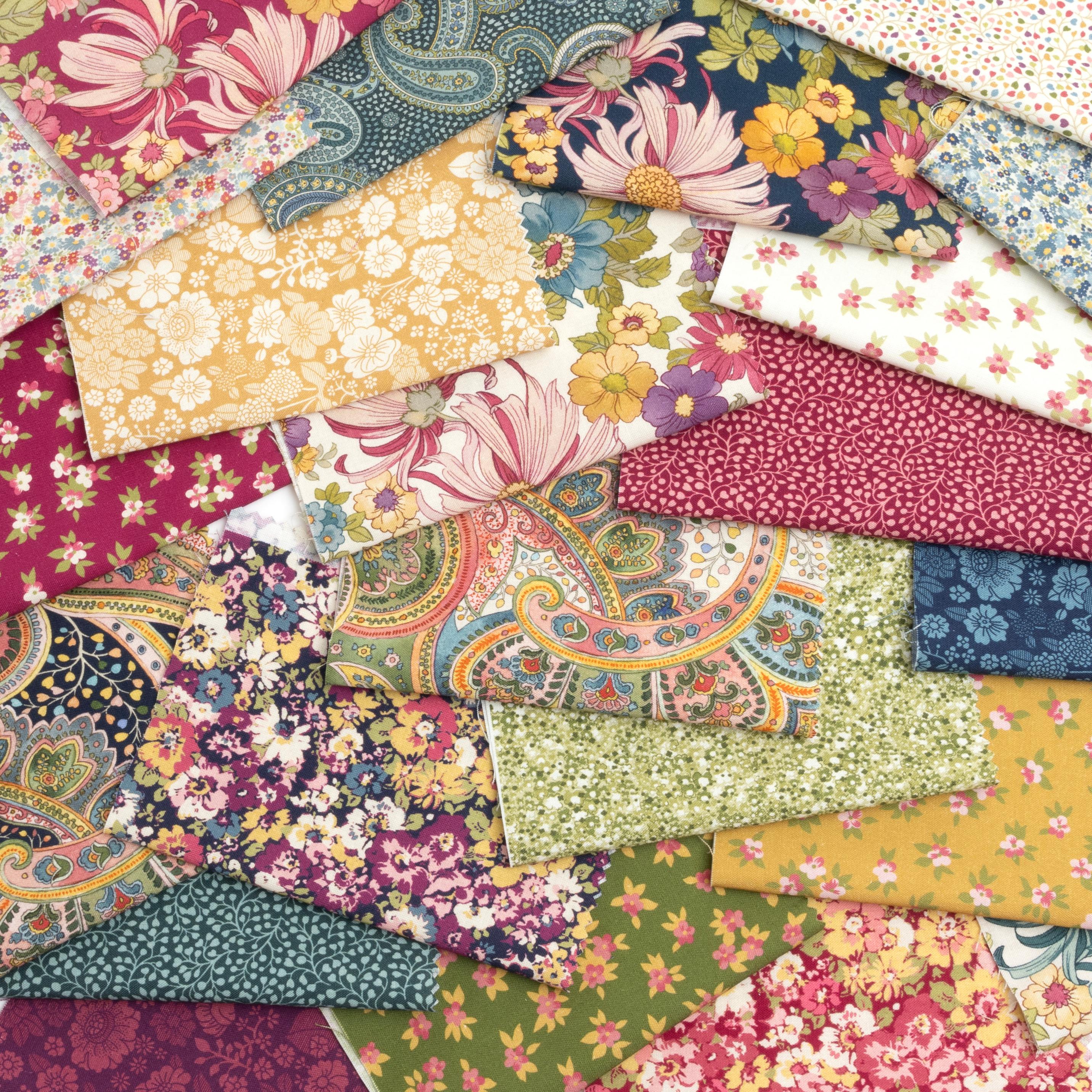
CHELSEA GARDEN
CHELSEA GARDEN


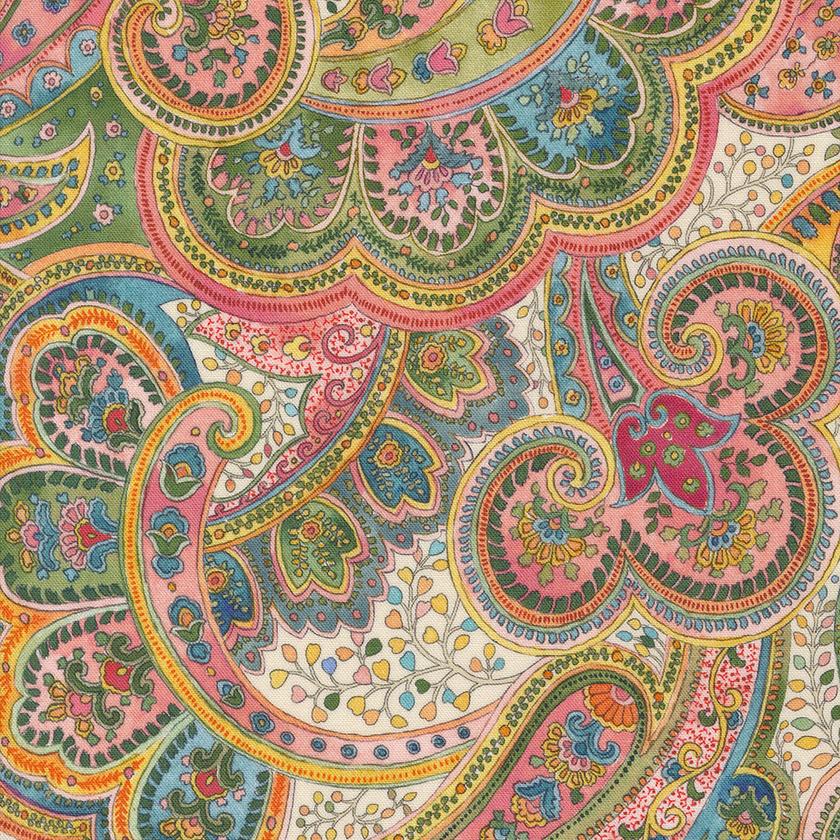
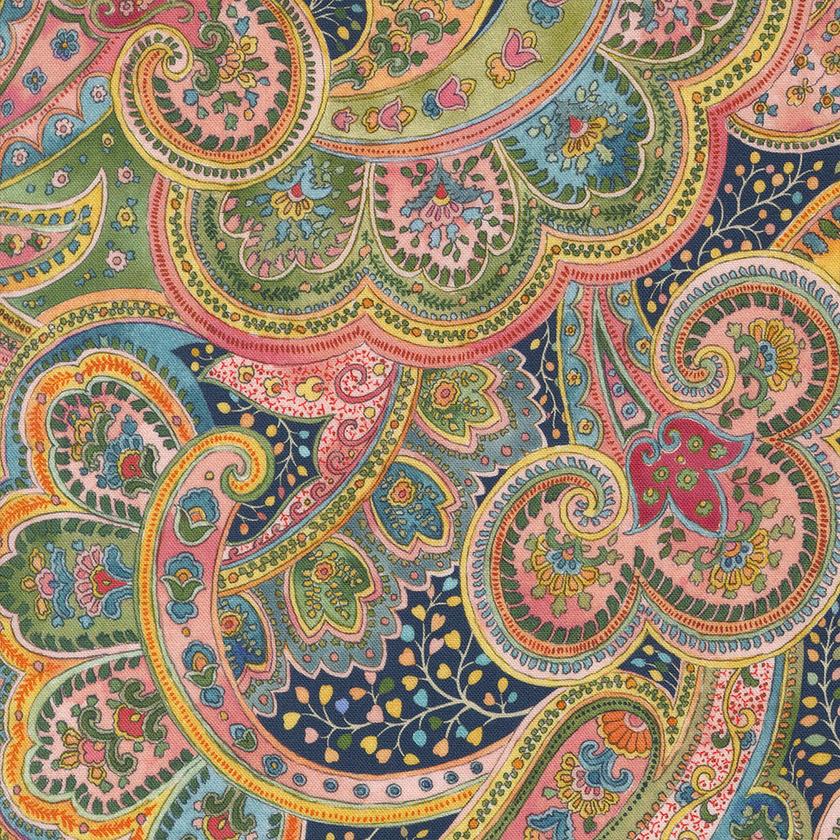


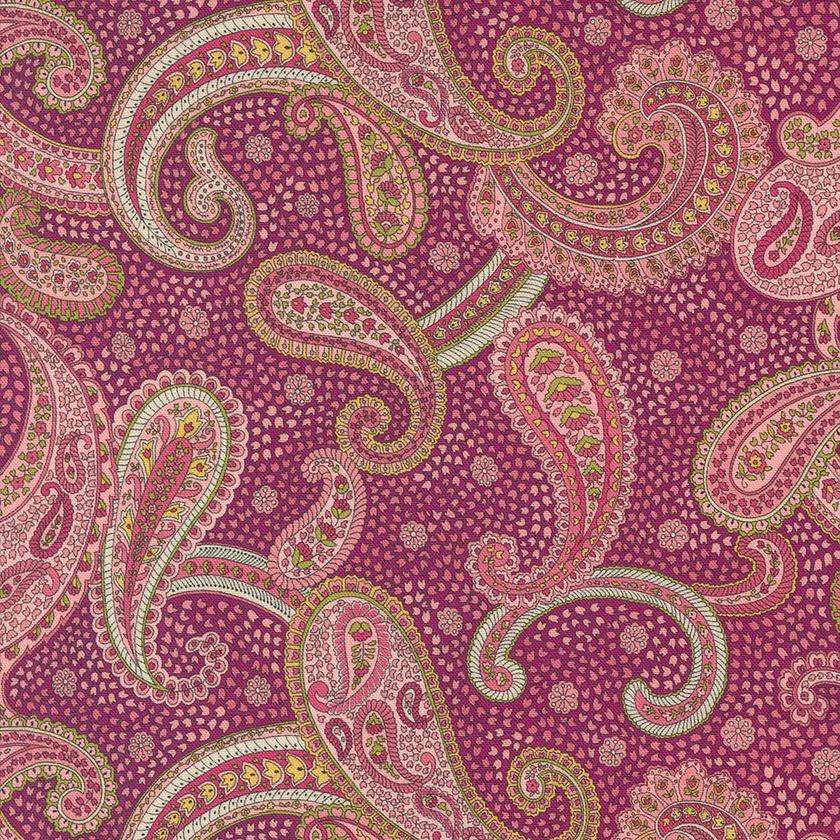
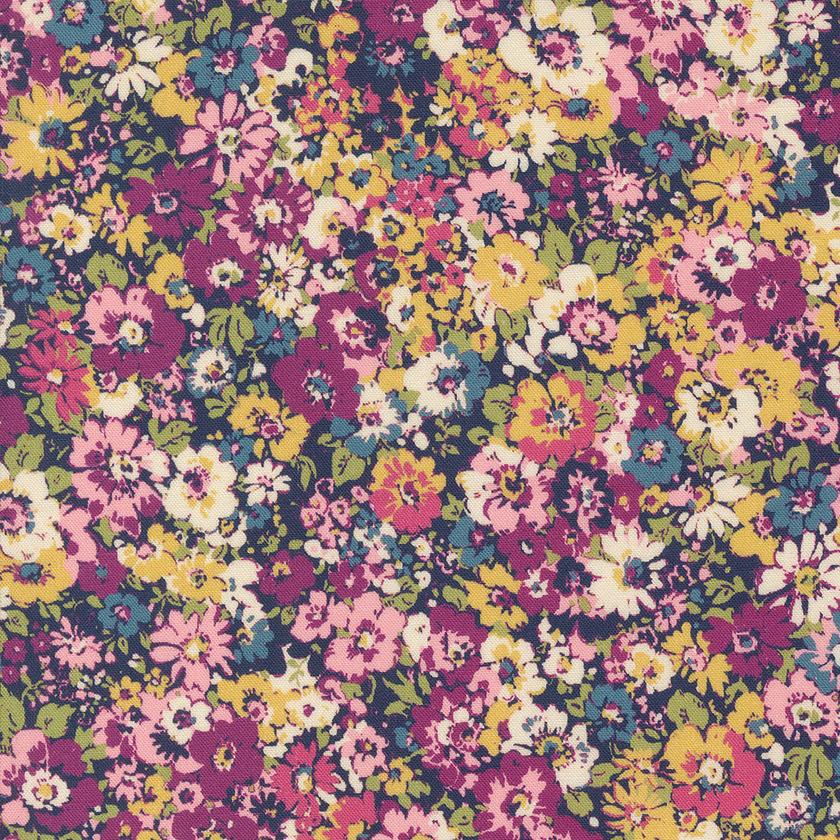

 NAVY 33745 12
MULBERRY 33743 17
NAVY MULTI 33741 12
MULBERRY 33744 13
PEACOCK 33743 14
PORCELAIN MULTI 33741 11
NAVY MULTI 33744 11
NAVY MULTI 33743 12
MULBERRY 33740 15
NAVY 33745 12
MULBERRY 33743 17
NAVY MULTI 33741 12
MULBERRY 33744 13
PEACOCK 33743 14
PORCELAIN MULTI 33741 11
NAVY MULTI 33744 11
NAVY MULTI 33743 12
MULBERRY 33740 15
33


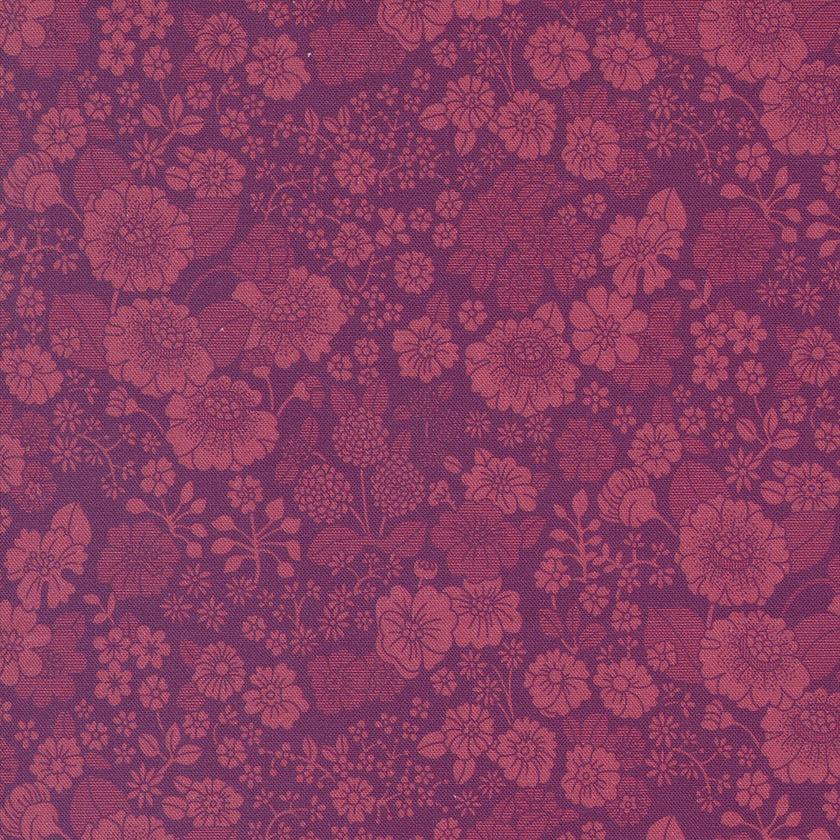
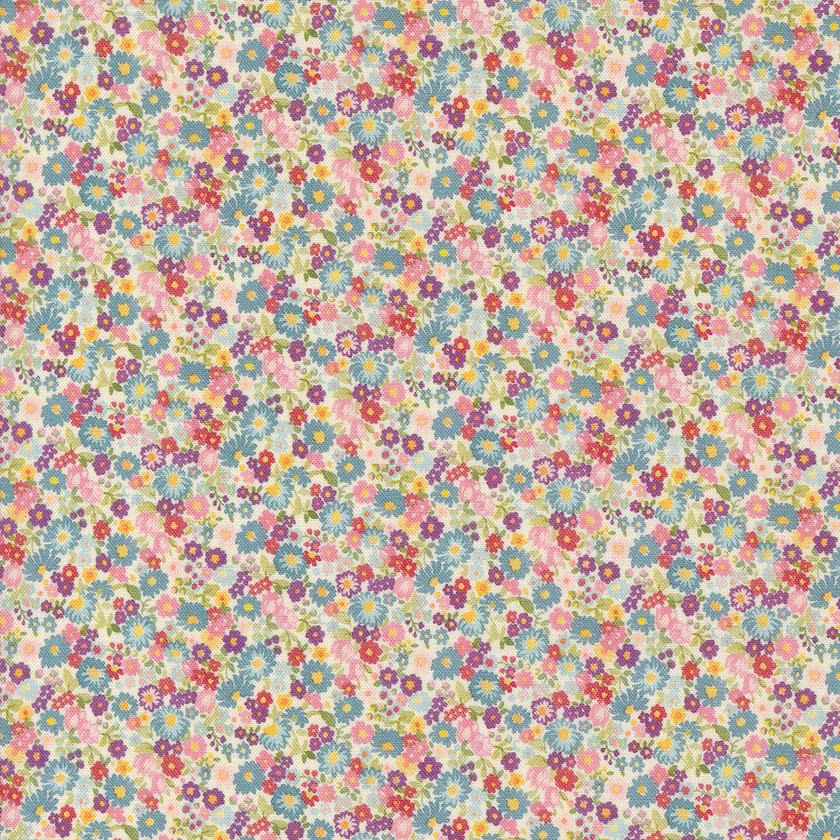
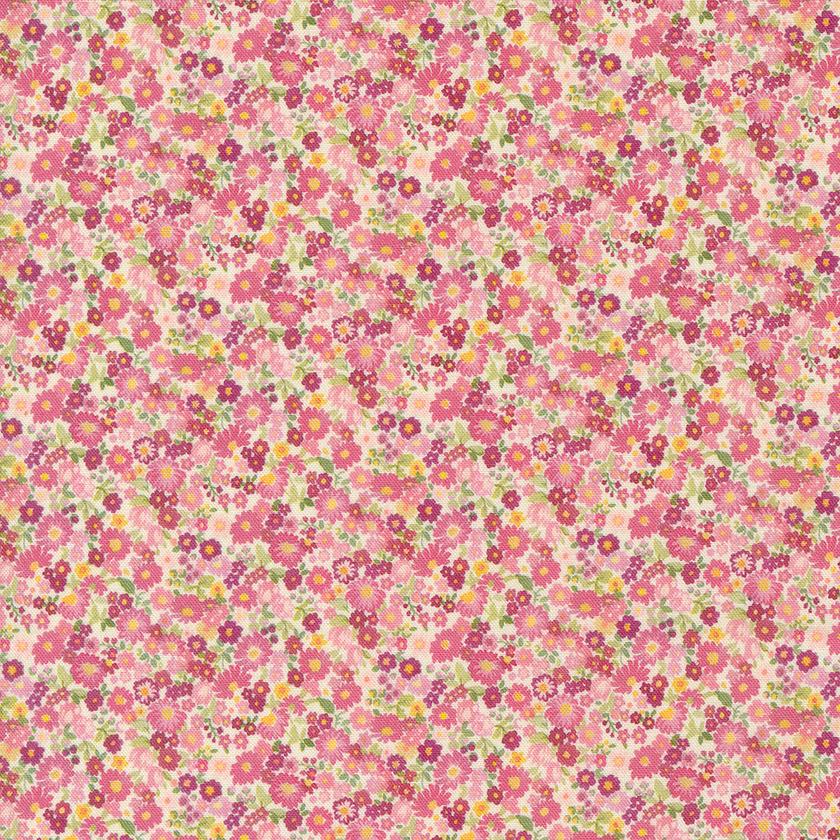



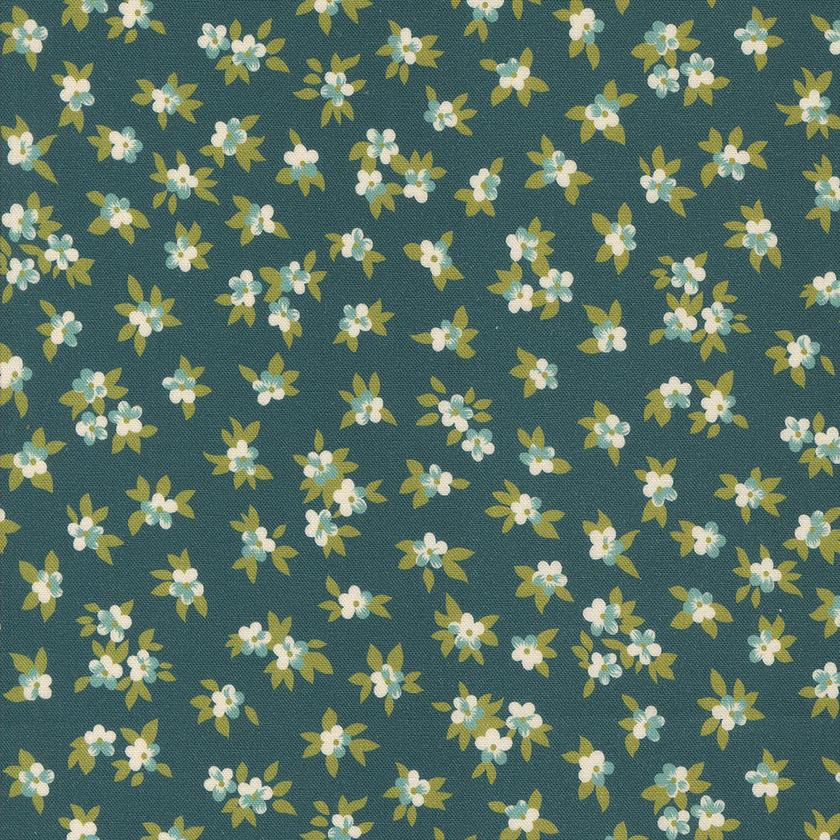
 LAYER CAKE® 33740LC
PORCELAIN ROSE 33749 14
PORCELAIN MULTI 33746 11
PEACOCK 33749 17
LICHEN 33747 13
PLUM 33745 20
NAVY 33749 16
CAMEO 33746 14
LAYER CAKE® 33740LC
PORCELAIN ROSE 33749 14
PORCELAIN MULTI 33746 11
PEACOCK 33749 17
LICHEN 33747 13
PLUM 33745 20
NAVY 33749 16
CAMEO 33746 14
34 CHELSEA GARDEN
GOLDENROD 33745 15

American Spirit
A 36” American Eagle panel sets the stage in this impressive ensemble of patriotic icons and symbols. Create quilts of valor, decorations for commemorative holidays, accessories, and apparel that will sew your pride for our great country ©Morris Creative

Manufacturer: QT Fabrics
Description: 100% Cotton
Type: 44"- 45" Wide
Designer: Morris Creative
Group Name: American Spirit
Theme: Patriotic

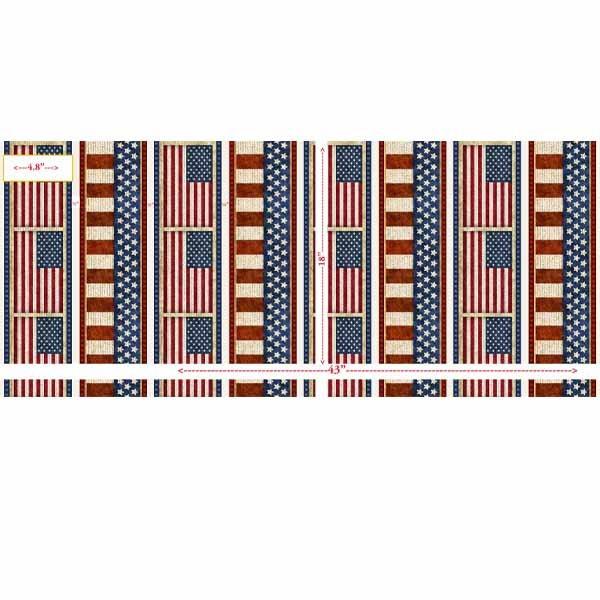

AMERICAN SPIRIT PATRIOTIC EAGLE PICTURE PATCHE 30125 -N FLAG STRIPE 30126 -R PATRIOTIC EAGLE PICTURE PATCHE 30125 -E


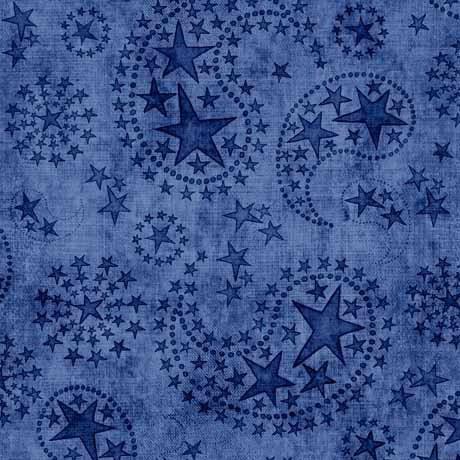

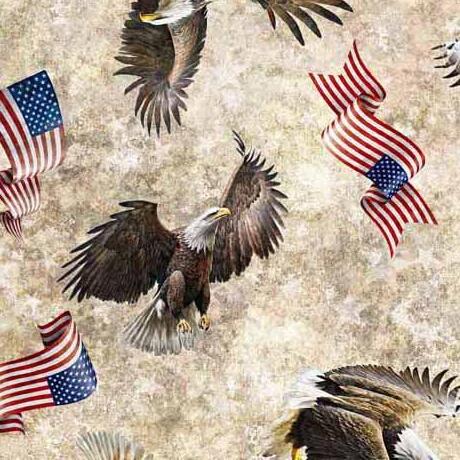
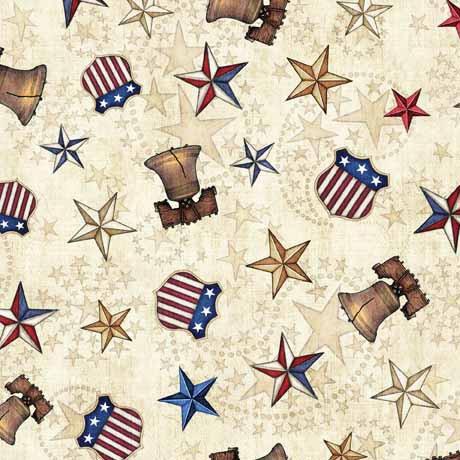
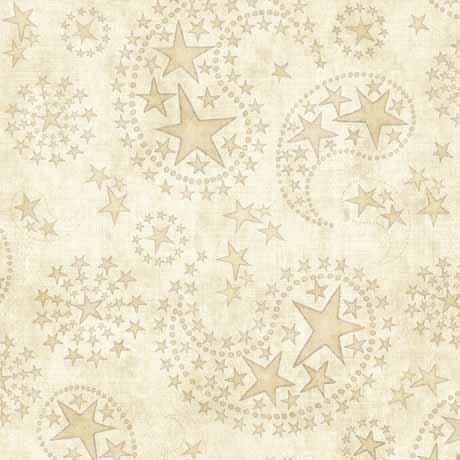


 108"
LIBERTY BELL AND STARS 1899 30130 -E
LIBERTY BELL AND STARS 30130 -W
FLAG TOSS 30129 -E
STAR PAISLEY TOSS 30131 -E
LIBERTY BELL AND STARS 30130 -E
EAGLE AND FLAG TOSS 30128 -E
STAR PAISLEY TOSS 30131 -B
FLAG TOSS 30129 -N
108"
LIBERTY BELL AND STARS 1899 30130 -E
LIBERTY BELL AND STARS 30130 -W
FLAG TOSS 30129 -E
STAR PAISLEY TOSS 30131 -E
LIBERTY BELL AND STARS 30130 -E
EAGLE AND FLAG TOSS 30128 -E
STAR PAISLEY TOSS 30131 -B
FLAG TOSS 30129 -N
AMERICAN SPIRIT 37
PATRIOTIC VIGNETTE 30127 -E
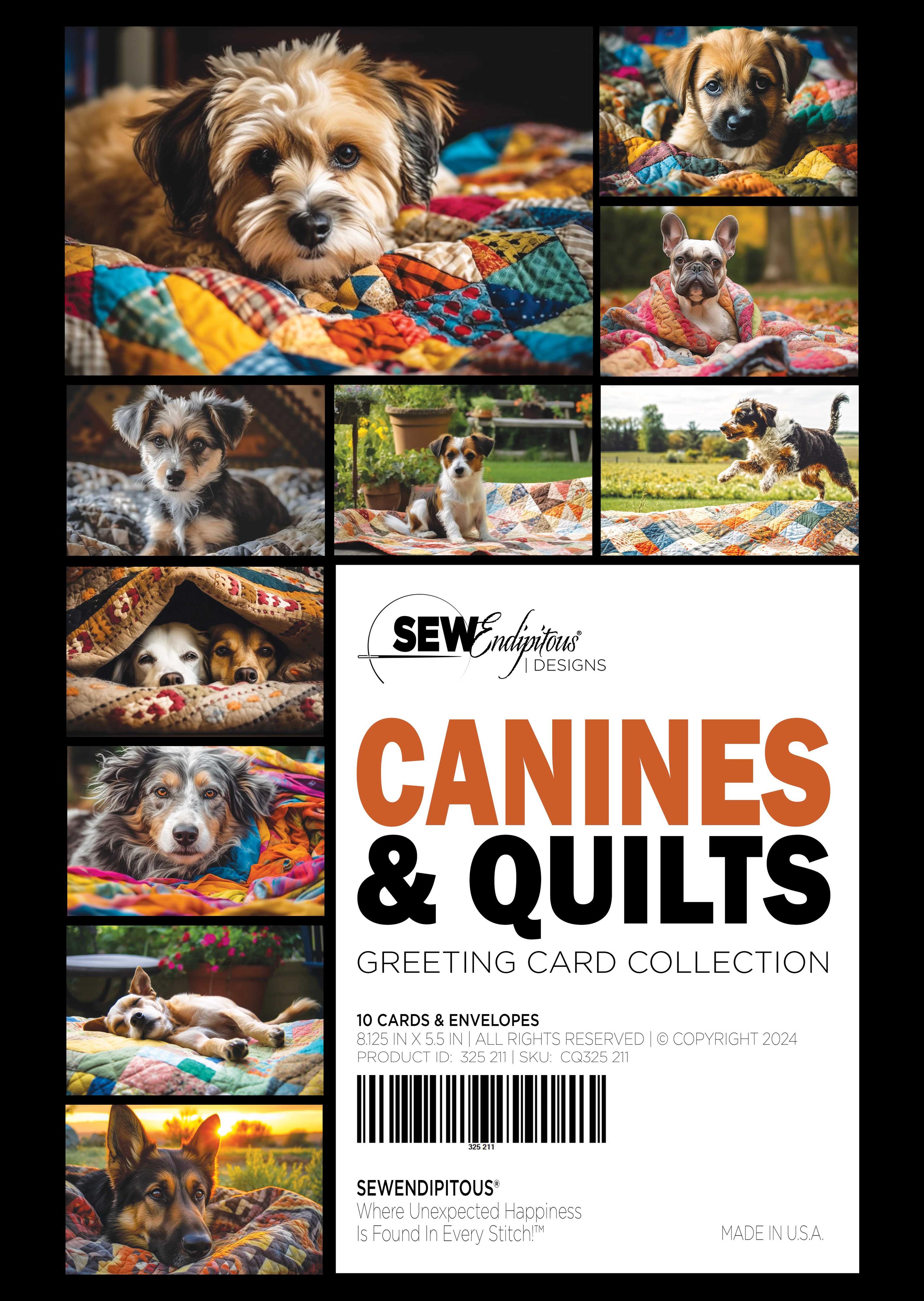


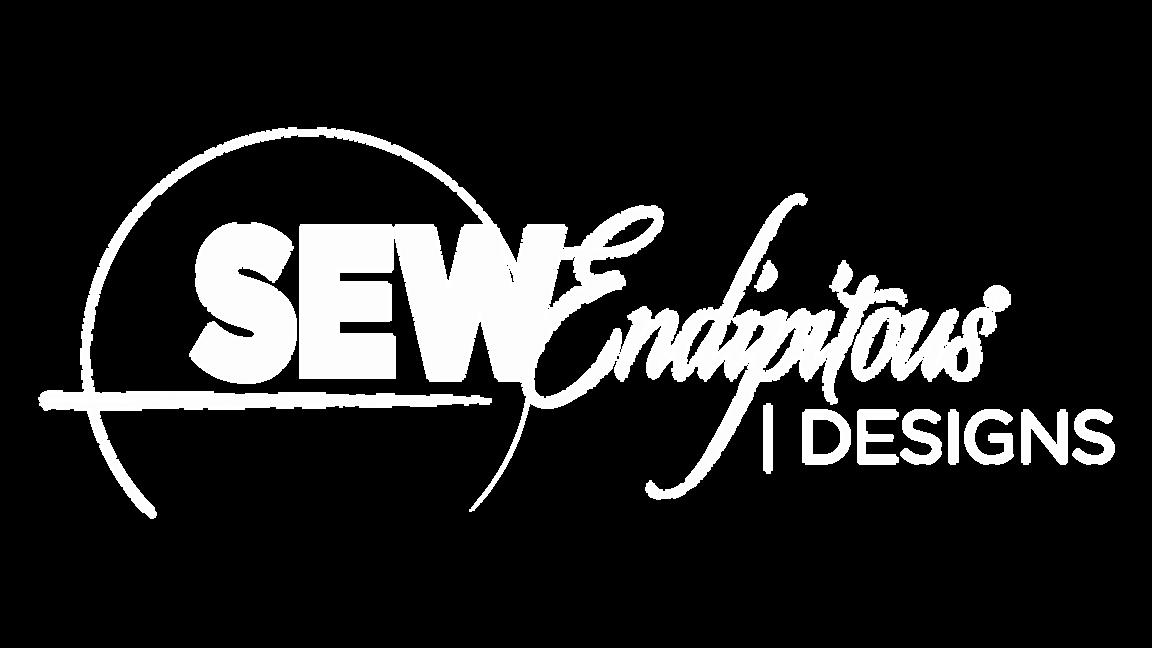
CANINES & QUILTS GREETING CARDS
Following the release of our insanely popular "Canines & Quilts" yearly calendar, we've brought our furry friends back for this super fun, anytimegreeting card collection that captures the heartwarming bond between our furry friends and their cozy and comforting quilts
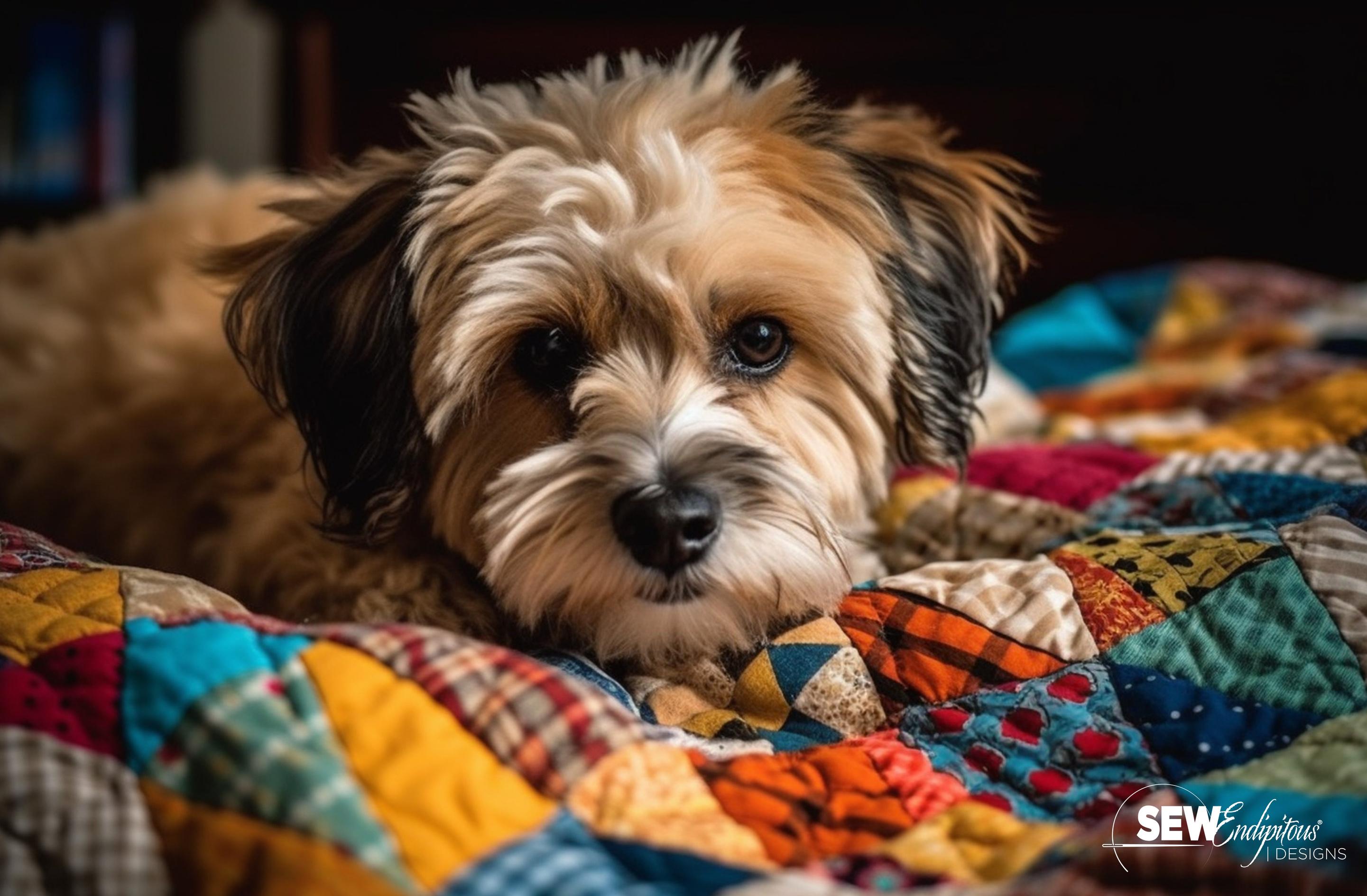



Each of the 10 cards in this collection showcases a different adorable fur-baby, each with their own unique personality shining through as they enjoy a special moment with their favorite quilt. From playful puppies to mature dogs, these cards are sure to bring a smile to any quilter or sewist's face.
The intricate details and vibrant colors of the quilts beautifully complement the charm of our canine models, creating a truly special and heartwarming collection that is perfect for any occasion. Whether you're sending a card to a fellow quilter or pet lover they are sure to brighten someone's day
The cards are printed on high-quality cardstock and are perfect for any occasion where a thoughtful and personal touch is needed, from birthdays and anniversaries to thank-you notes and holiday greetings. So why not send a special greeting in the form of these beautiful cards that reminded them of the art and beauty of sewing and quilting. The interior is left blank for the sentiment of your choosing.
39

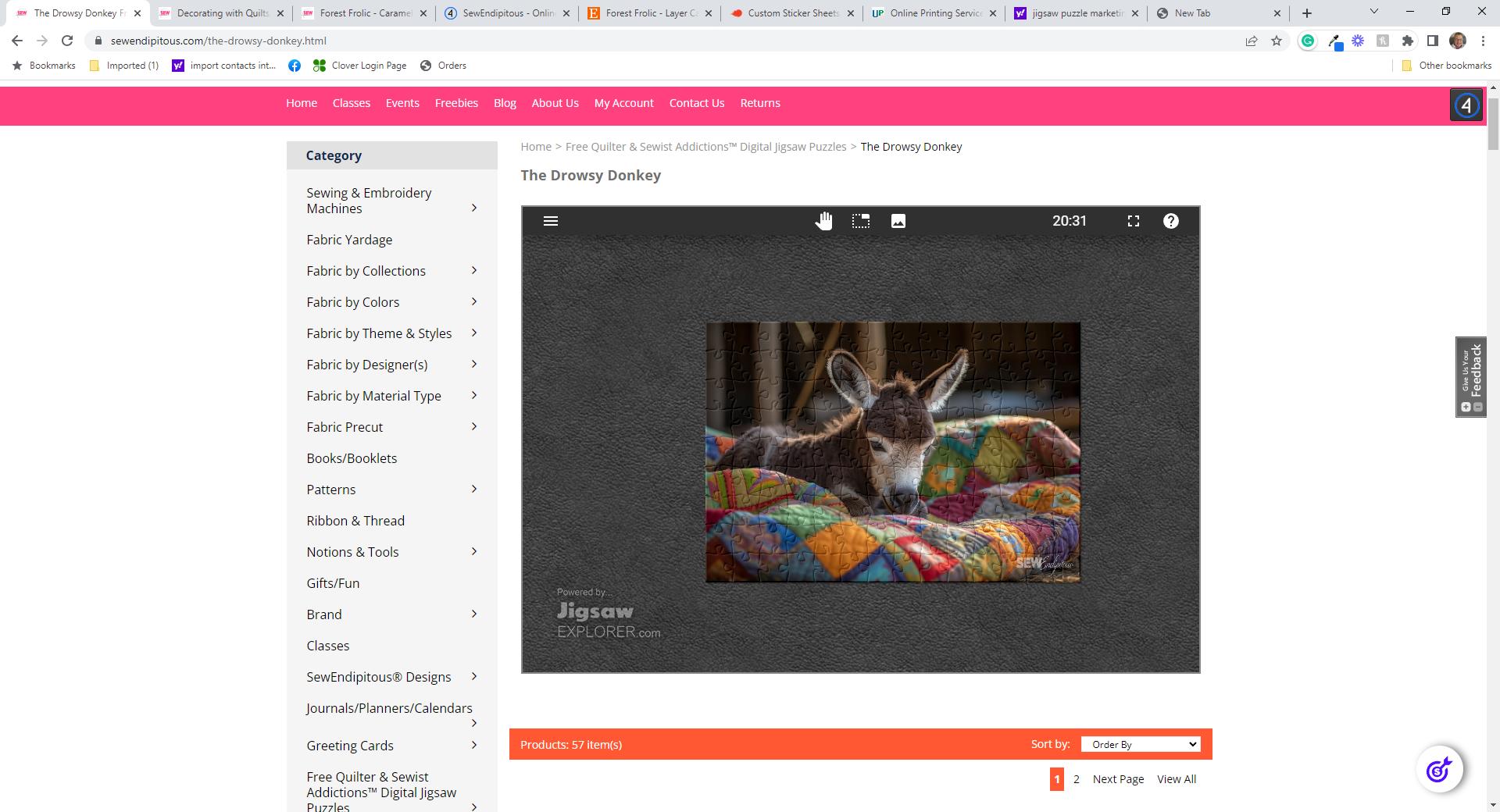

FREE D i g i t a l A r t C r e a t i o n s b y S t e v e B a k e r S e w E n d i p i t o u s ® D e s i g n s 5 NEW PUZZLES WEEKLY | 240+ PUZZLES FREE QUILTER & SEWIST ADDICTIONS™ DIGITAL JIGSAW PUZZLES
F R E Blooming Rainbow
A NEW QUILTING INSPIRED DAILY JIGSAW PUZZLE

WhereUnexpectedHappinessIsFoundinEveryStitch!
About SewEndipitous®
MISSION
To provide the best products and services to our customers at the lowest prices possible We take great pride in our company, our commitment to customer service, and the products we sell Our Rock Hill SC shop and online store is designed to provide you with a safe and secure environment to browse our product catalog.
FOUNDER
Lisa Renee' Baker - SewEndiptious® is a way to pass on this multi-generational craft and to share my love of fabric, sewing, quilting, etc., with other like-hearted friends unknown - my SewEndipitous Sisters (and Brothers)
CURATED CATALOG/LOOKBOOK
CREATOR & EDITOR
Steve Baker
Director of Marketing
SHOP INFORMATION
(803) 366-1100
1093A Albright Road, Rock Hill SC 29730
www.SewEndipitous.com
Copyright
2024
All Rights Reserved
SewEndipitous

























 PWMF033 .GUAVA
PWMF036 GRASS
PWMF038 JADE
Love Always, AM PWAH158.SKY
PWMF033 .NEAPOLITAN
PWMF036 PLUM
PWMF038 MAGENTA
Love Always, AM PWAH202.GOLDEN
PWMF037 .MAIZE
PWMF035 NAVY
PWMF032 PRIMARY
Love Always, AM PWAH132.MANGO
PWMF037 .MAPLE
PWMF035 TANGERINE
PWMF032 SECONDARY
PWMF033 .GUAVA
PWMF036 GRASS
PWMF038 JADE
Love Always, AM PWAH158.SKY
PWMF033 .NEAPOLITAN
PWMF036 PLUM
PWMF038 MAGENTA
Love Always, AM PWAH202.GOLDEN
PWMF037 .MAIZE
PWMF035 NAVY
PWMF032 PRIMARY
Love Always, AM PWAH132.MANGO
PWMF037 .MAPLE
PWMF035 TANGERINE
PWMF032 SECONDARY








































 DANDELION MUL 9743 11
SUNFLOWER 9742 12
BLUEBELL 9740 14
CROCUS 9742 16
DANDELION MUL 9742 11
POPPY 9740 13
LEAF 9742 15
MULCH 9740 19
DANDELION MUL 9740 11
DANDELION MUL 9743 11
SUNFLOWER 9742 12
BLUEBELL 9740 14
CROCUS 9742 16
DANDELION MUL 9742 11
POPPY 9740 13
LEAF 9742 15
MULCH 9740 19
DANDELION MUL 9740 11








 BLUEBELL 9748 14
LEAF 9747 15
MULCH 9745 19
POPPY 9748 13
DANDELION MUL 9747 11
BLUEBELL 9744 14
TIGER LILY 9747 17
LEAF 9746 15
BLUEBELL 9748 14
LEAF 9747 15
MULCH 9745 19
POPPY 9748 13
DANDELION MUL 9747 11
BLUEBELL 9744 14
TIGER LILY 9747 17
LEAF 9746 15



















 NAVY 33745 12
MULBERRY 33743 17
NAVY MULTI 33741 12
MULBERRY 33744 13
PEACOCK 33743 14
PORCELAIN MULTI 33741 11
NAVY MULTI 33744 11
NAVY MULTI 33743 12
MULBERRY 33740 15
NAVY 33745 12
MULBERRY 33743 17
NAVY MULTI 33741 12
MULBERRY 33744 13
PEACOCK 33743 14
PORCELAIN MULTI 33741 11
NAVY MULTI 33744 11
NAVY MULTI 33743 12
MULBERRY 33740 15








 LAYER CAKE® 33740LC
PORCELAIN ROSE 33749 14
PORCELAIN MULTI 33746 11
PEACOCK 33749 17
LICHEN 33747 13
PLUM 33745 20
NAVY 33749 16
CAMEO 33746 14
LAYER CAKE® 33740LC
PORCELAIN ROSE 33749 14
PORCELAIN MULTI 33746 11
PEACOCK 33749 17
LICHEN 33747 13
PLUM 33745 20
NAVY 33749 16
CAMEO 33746 14
























